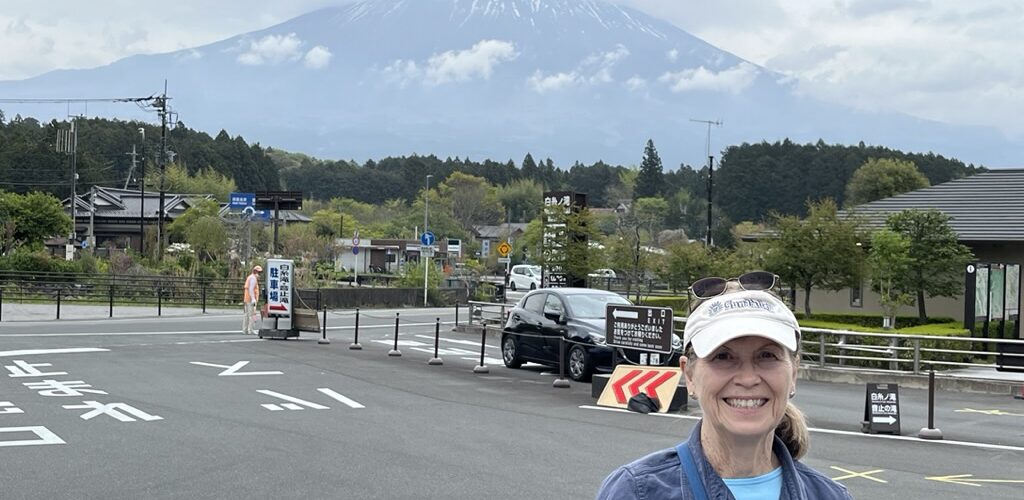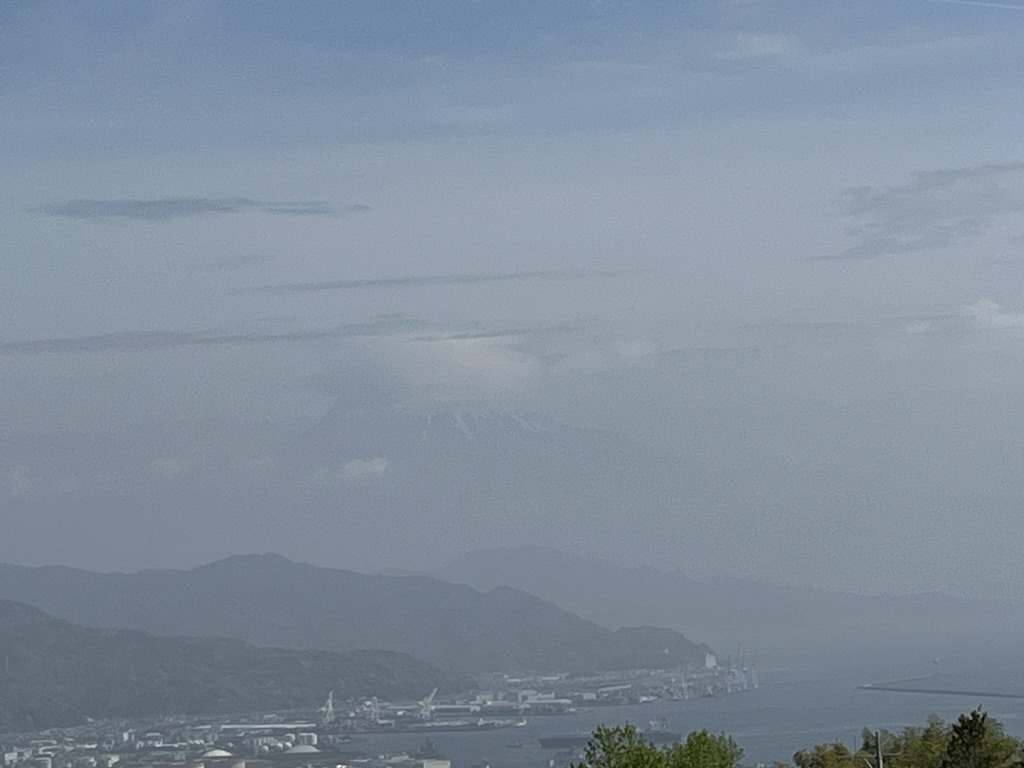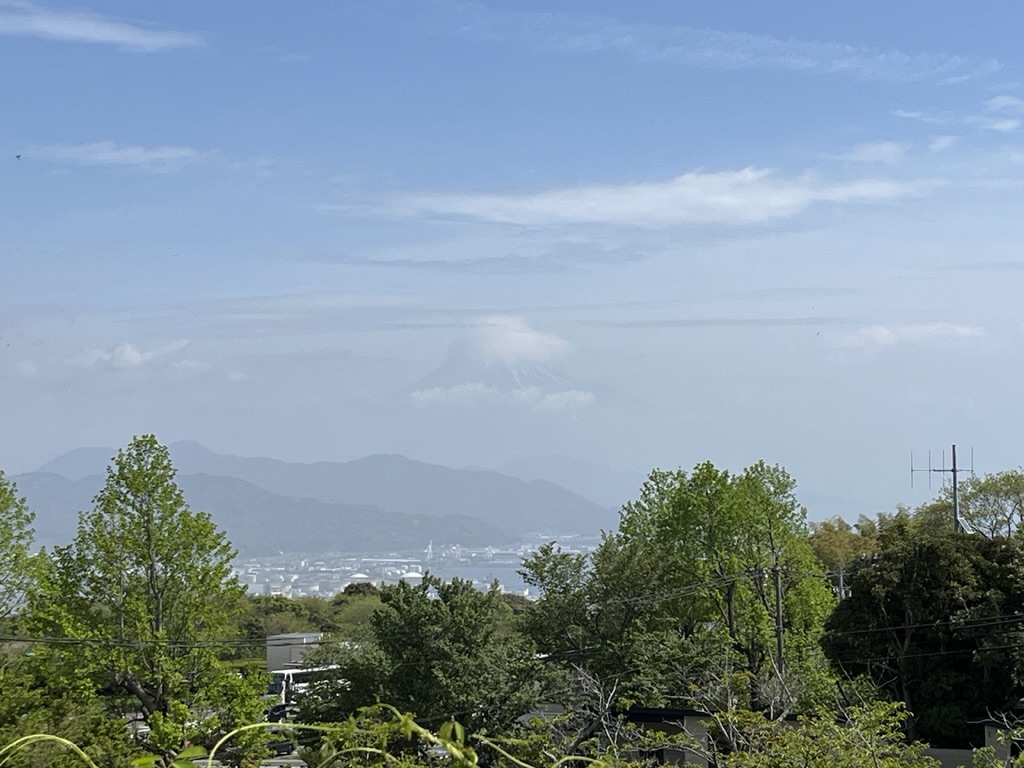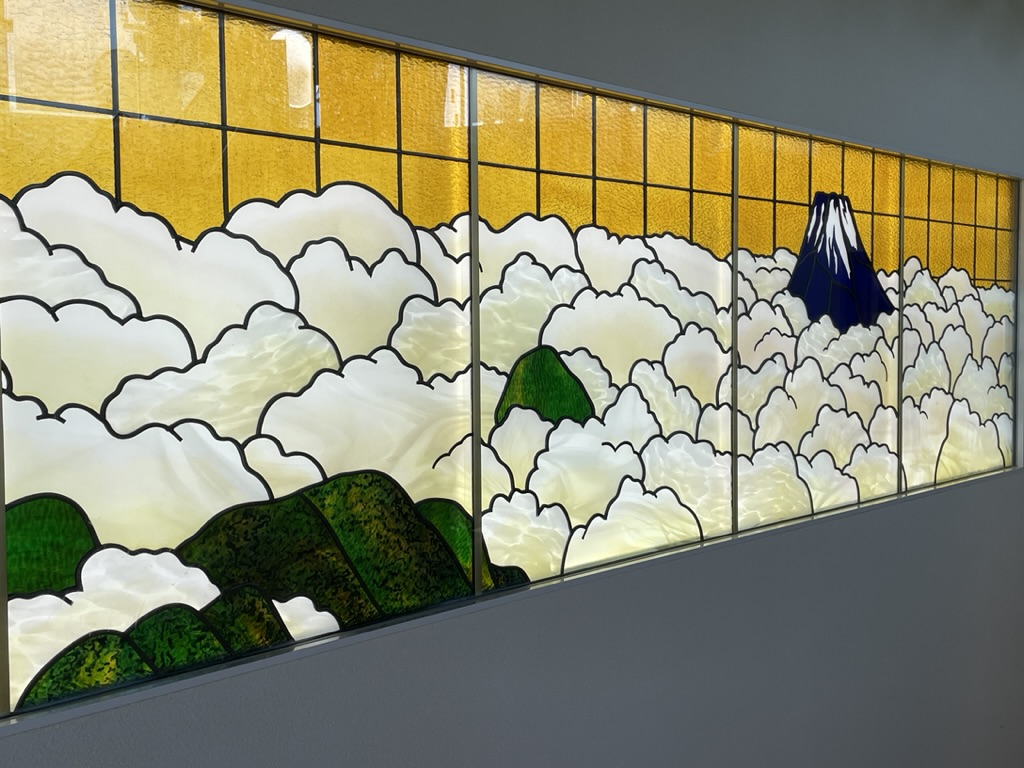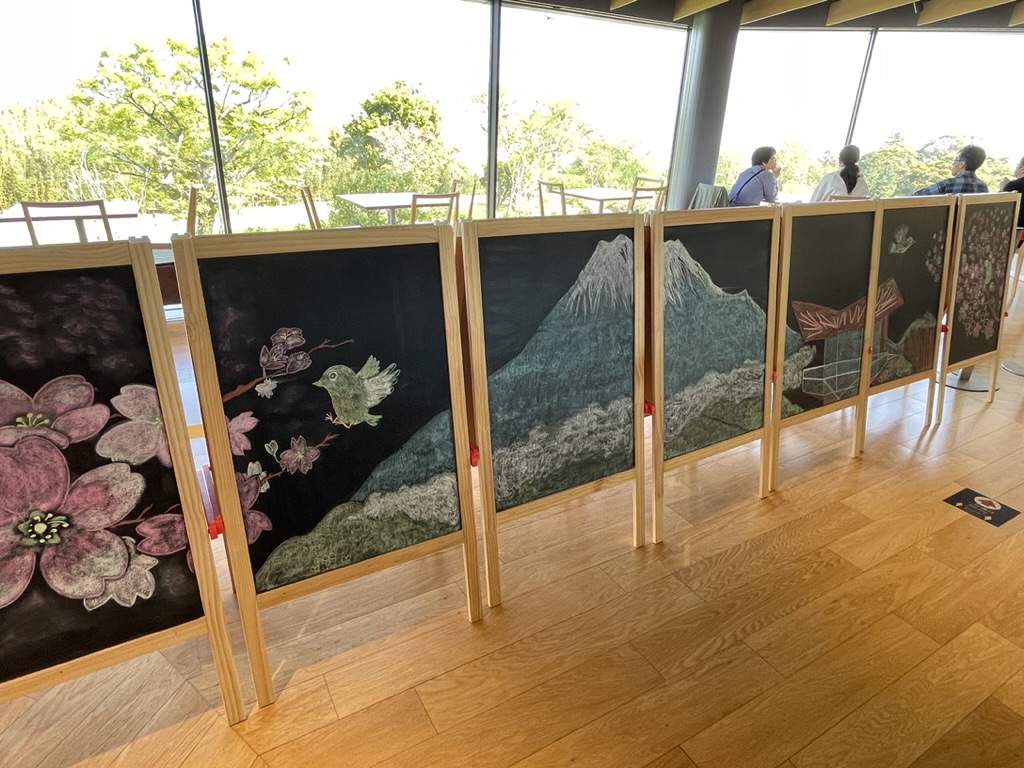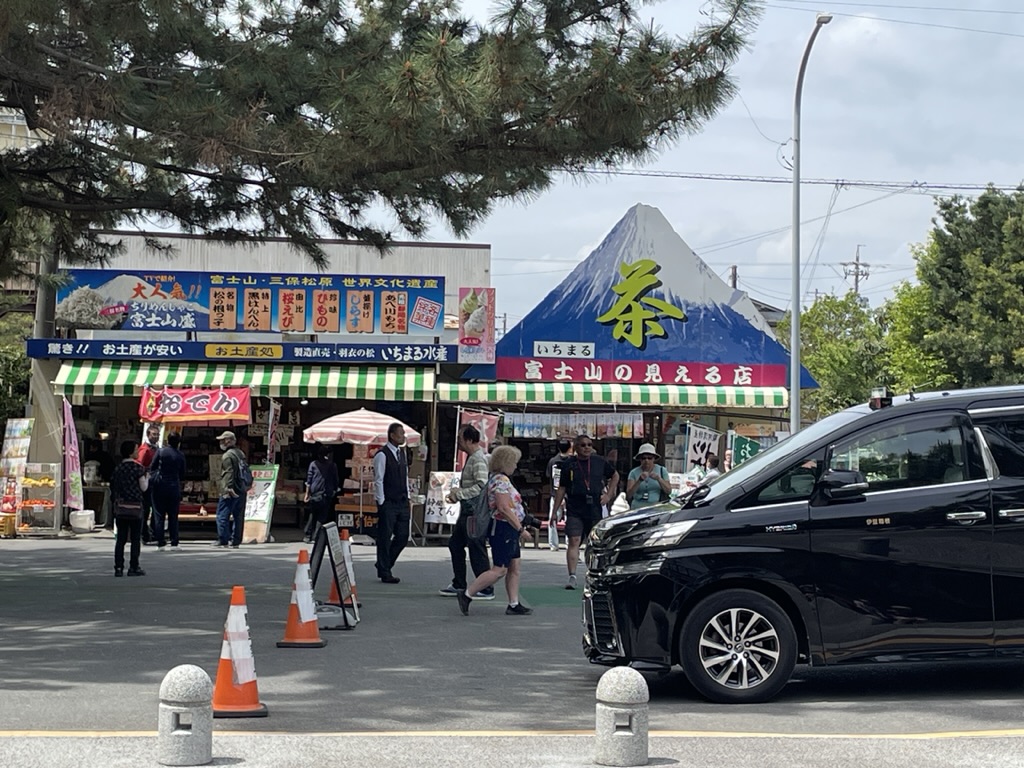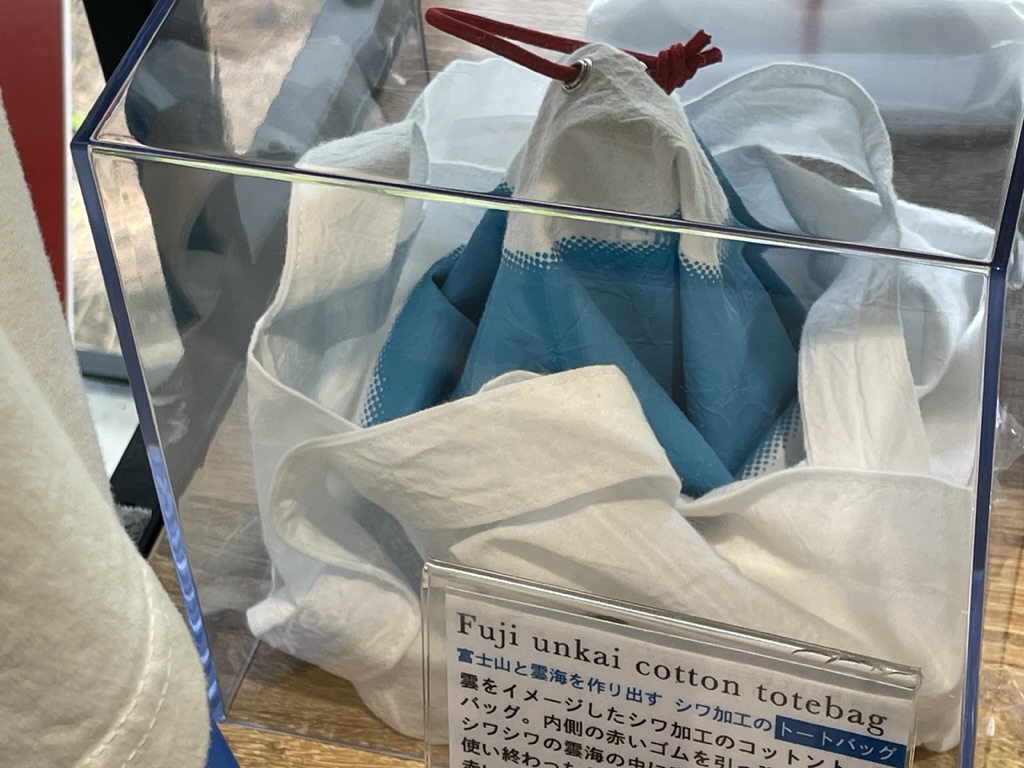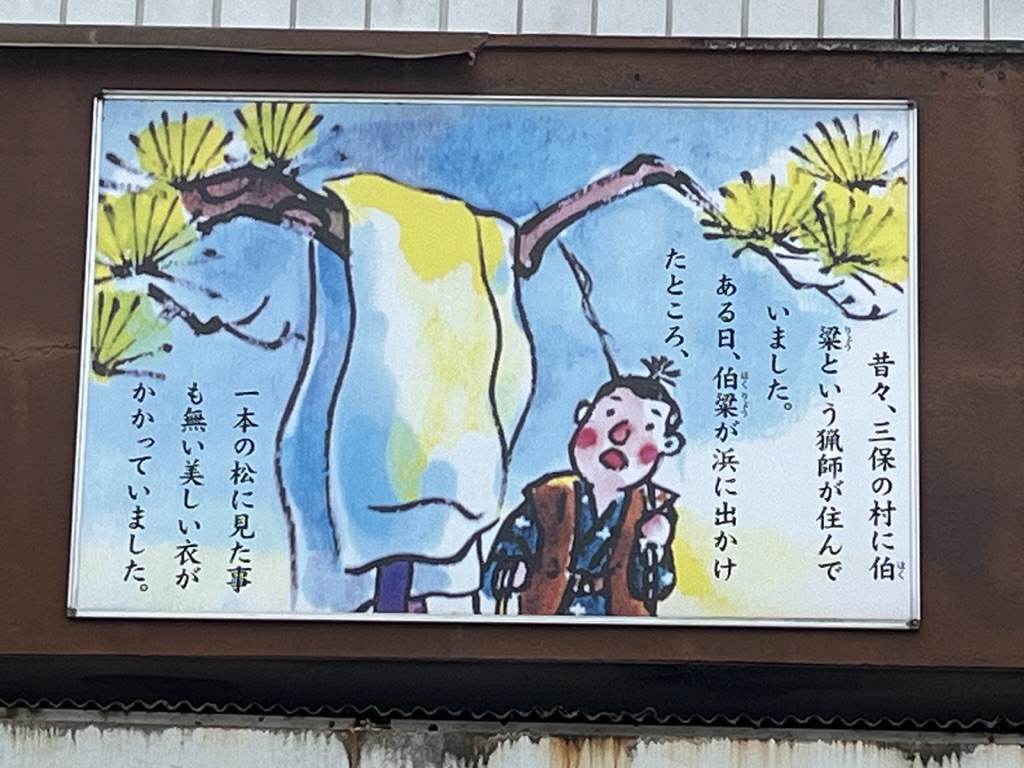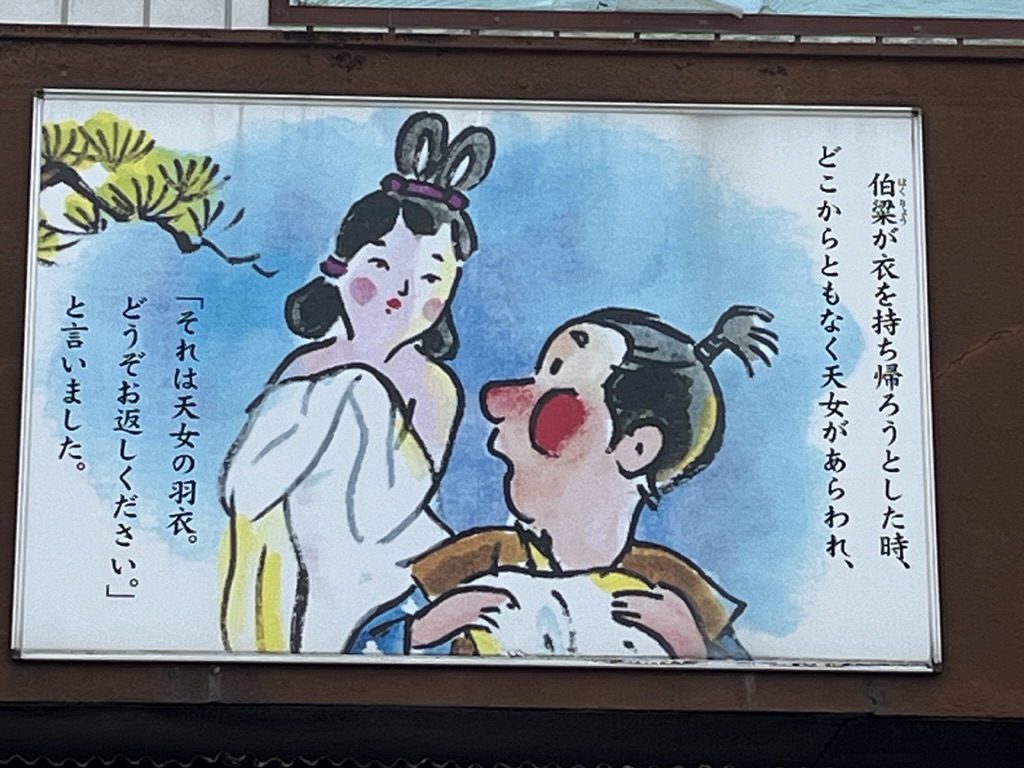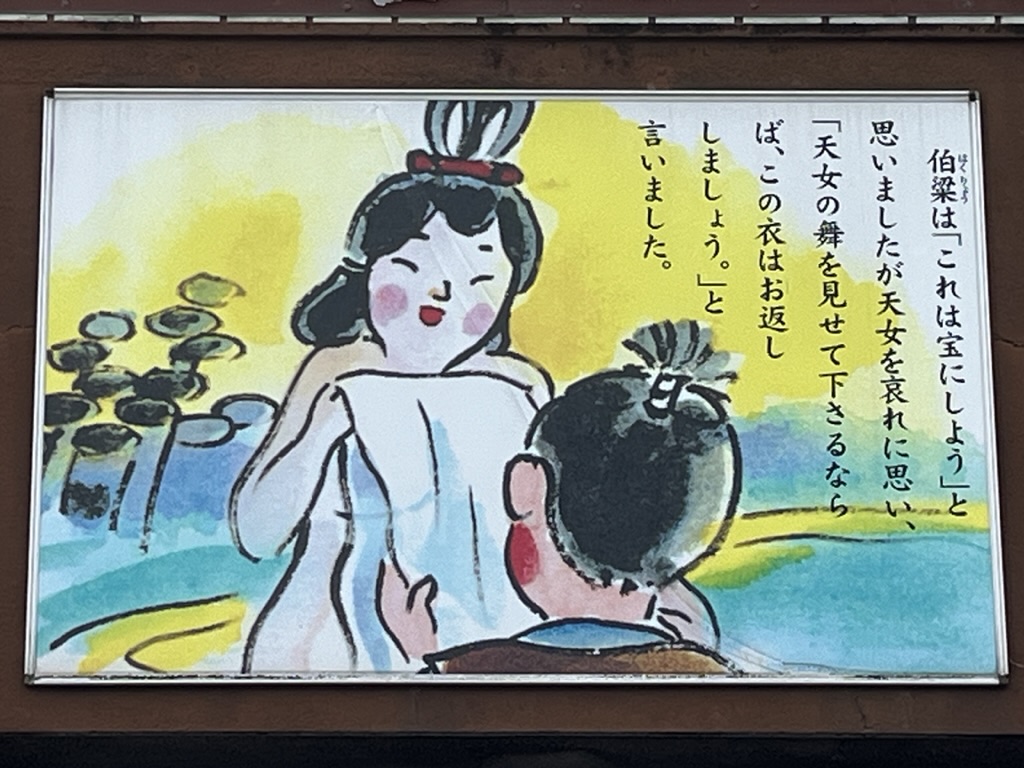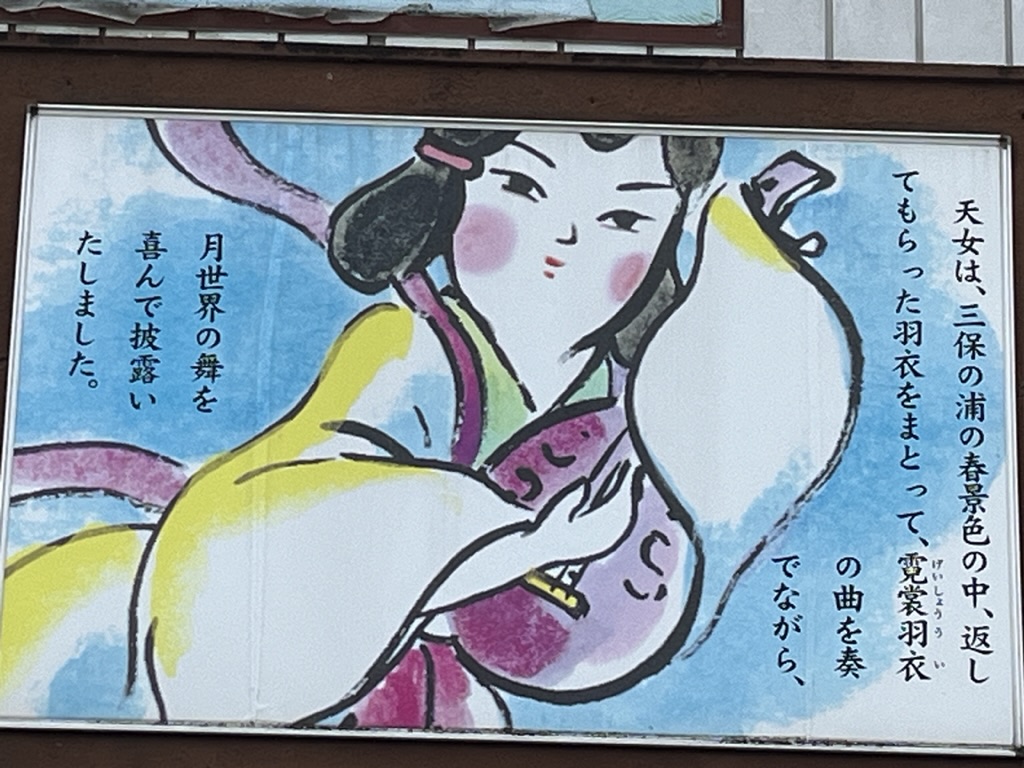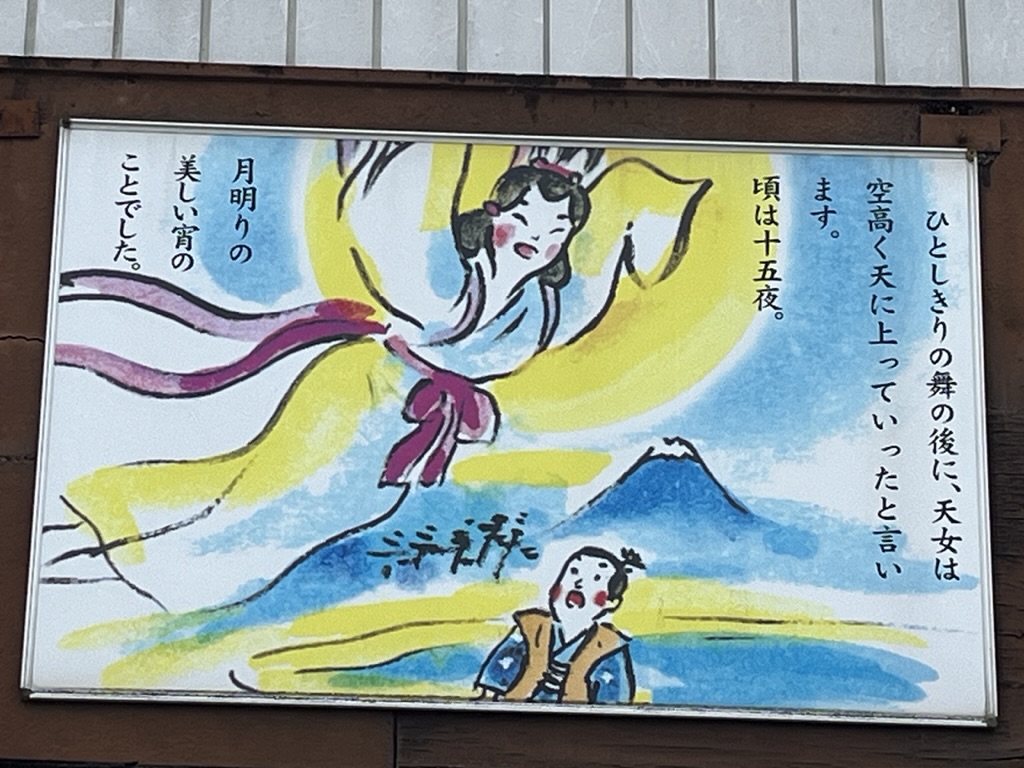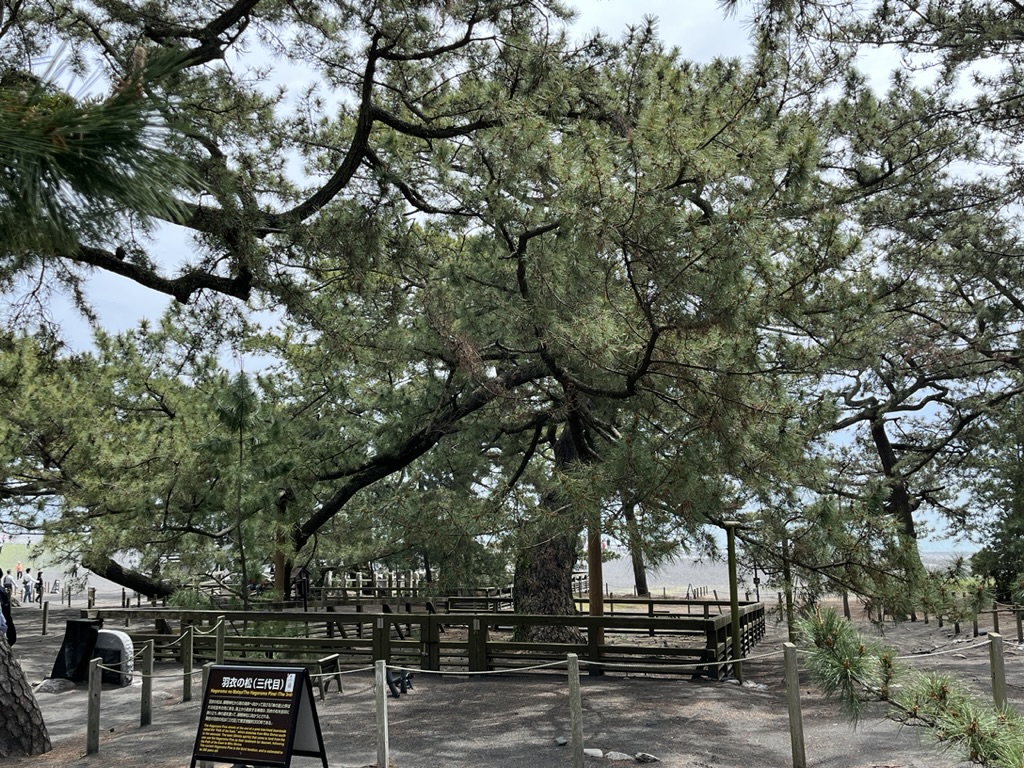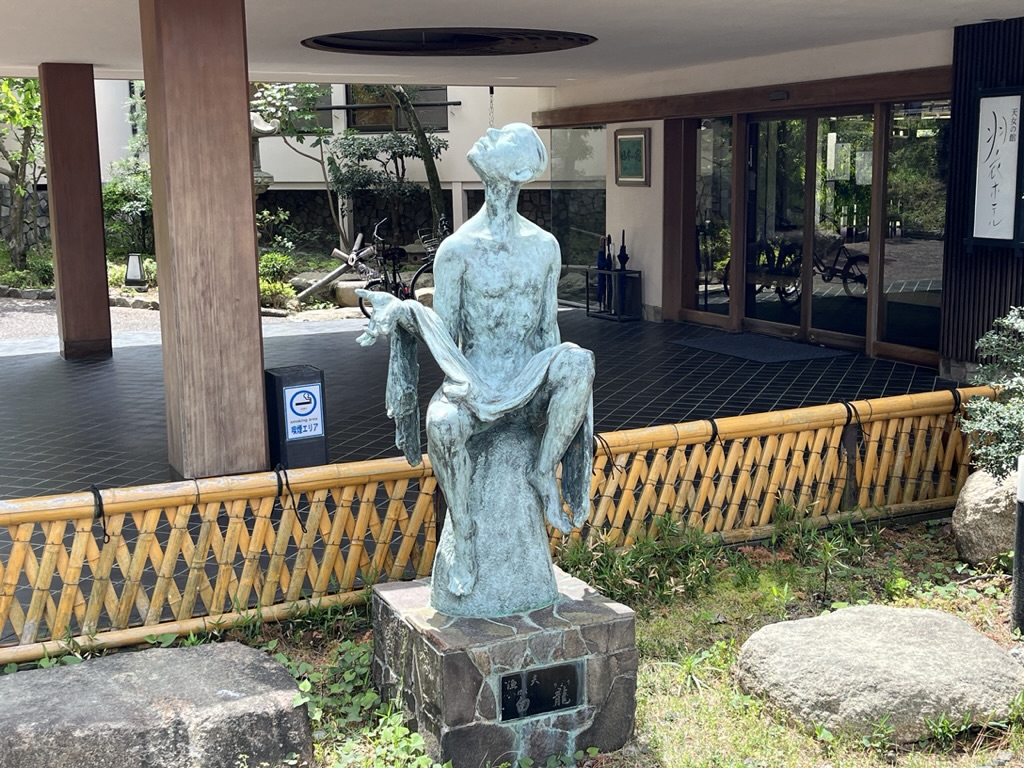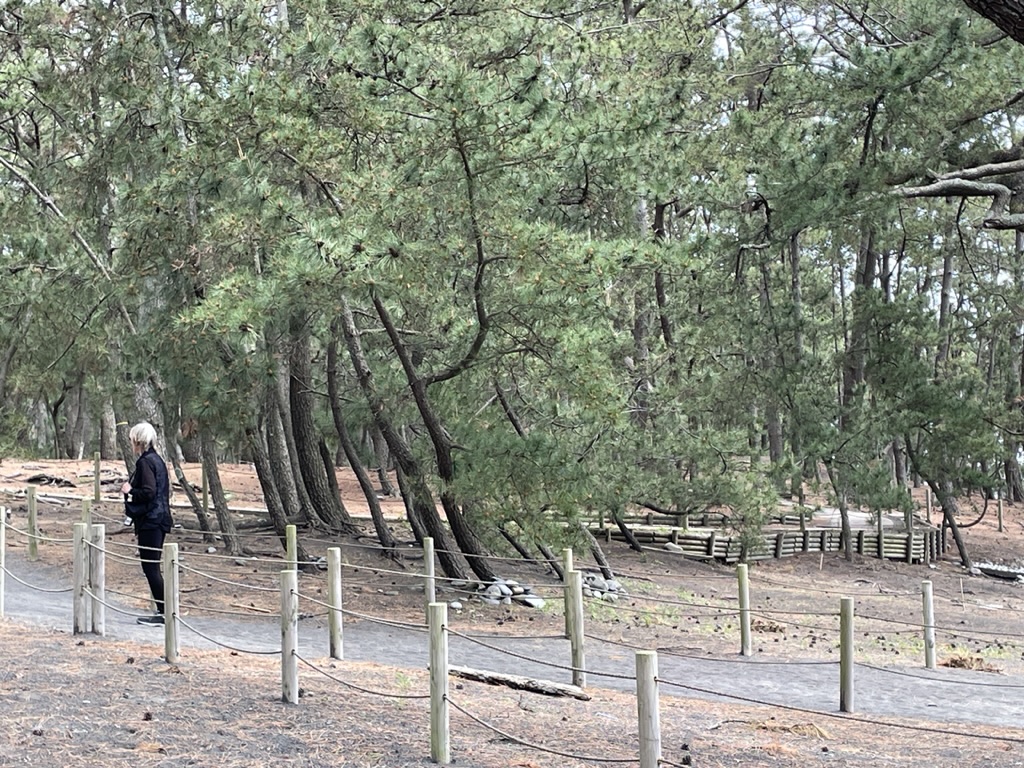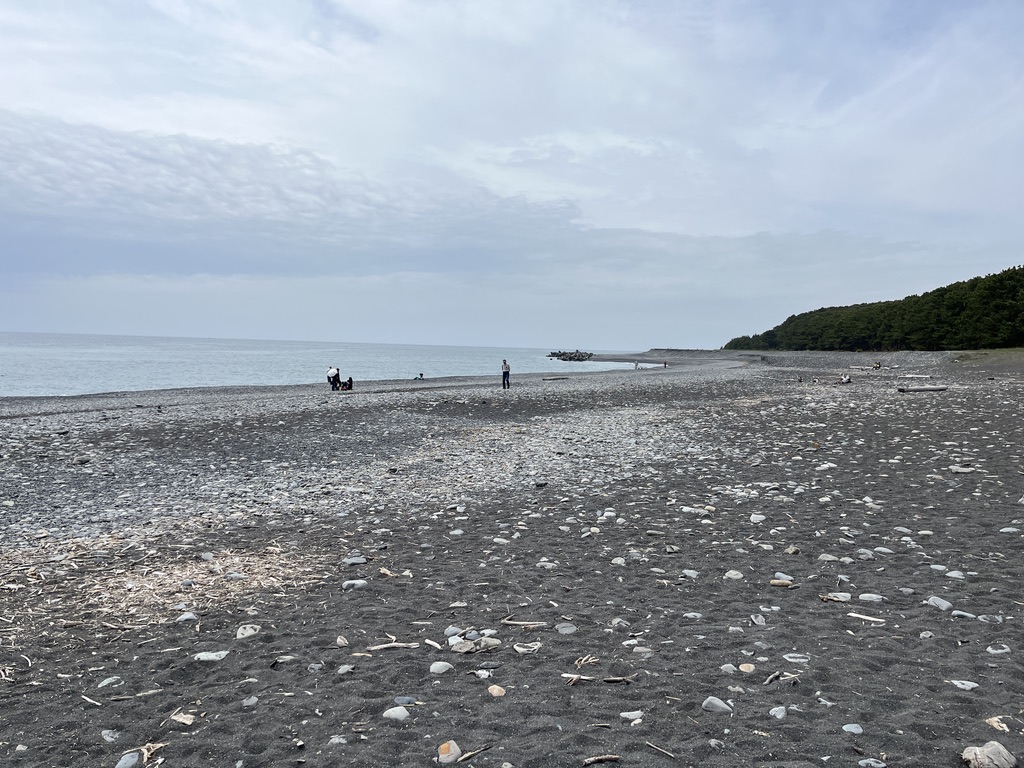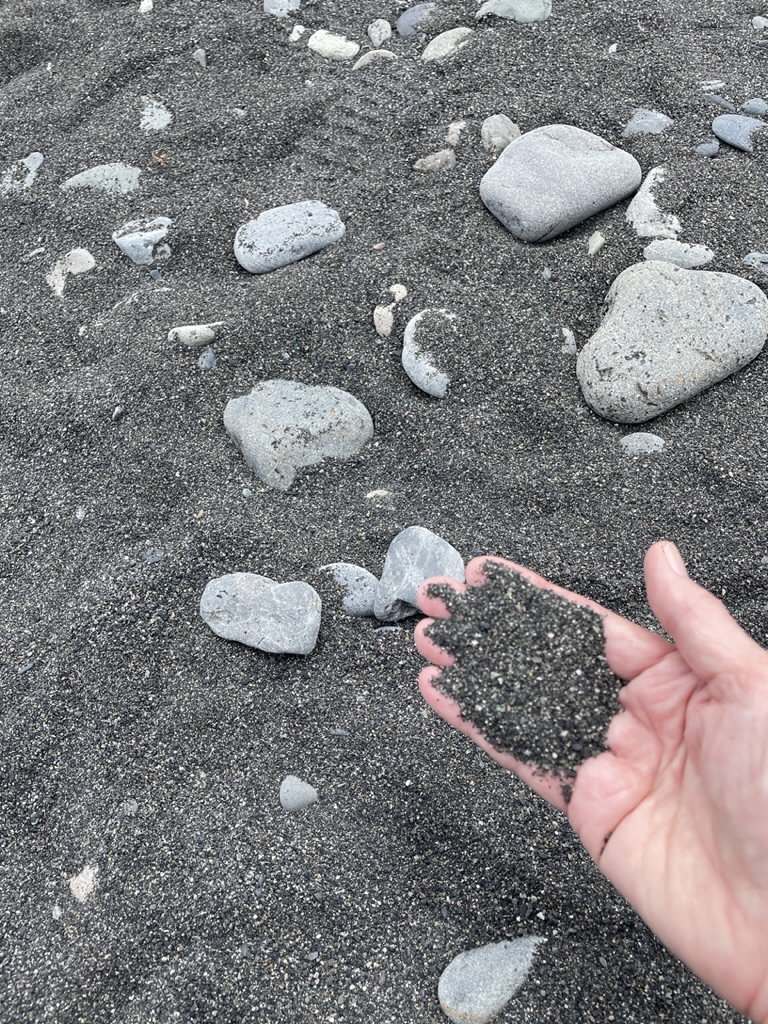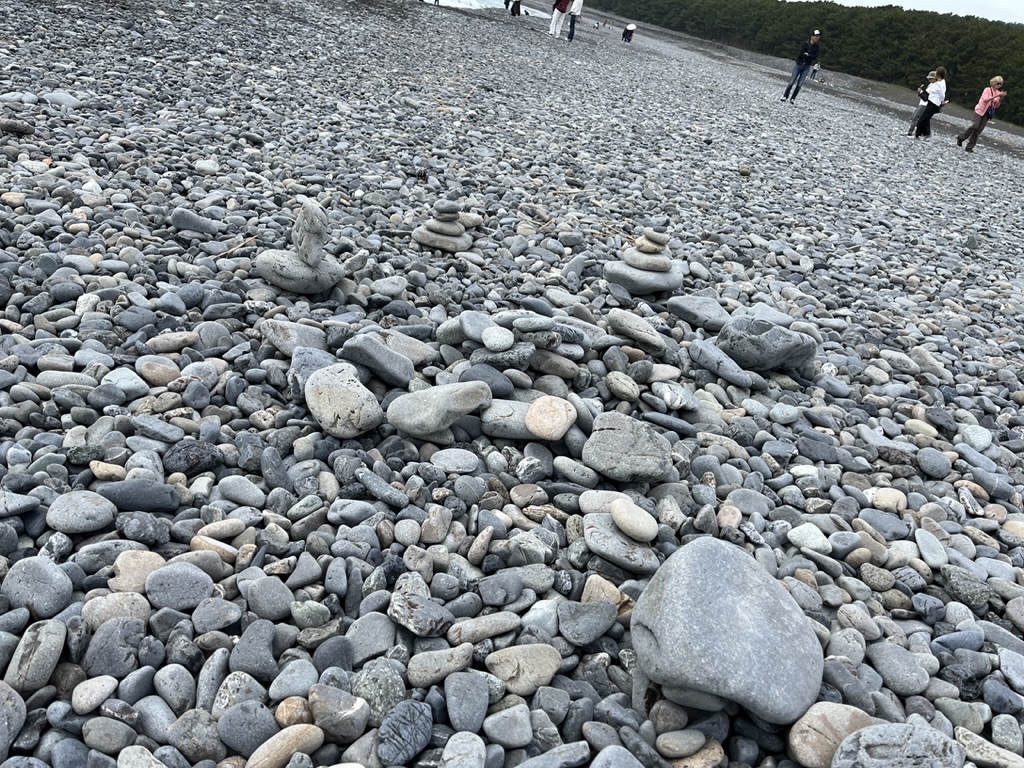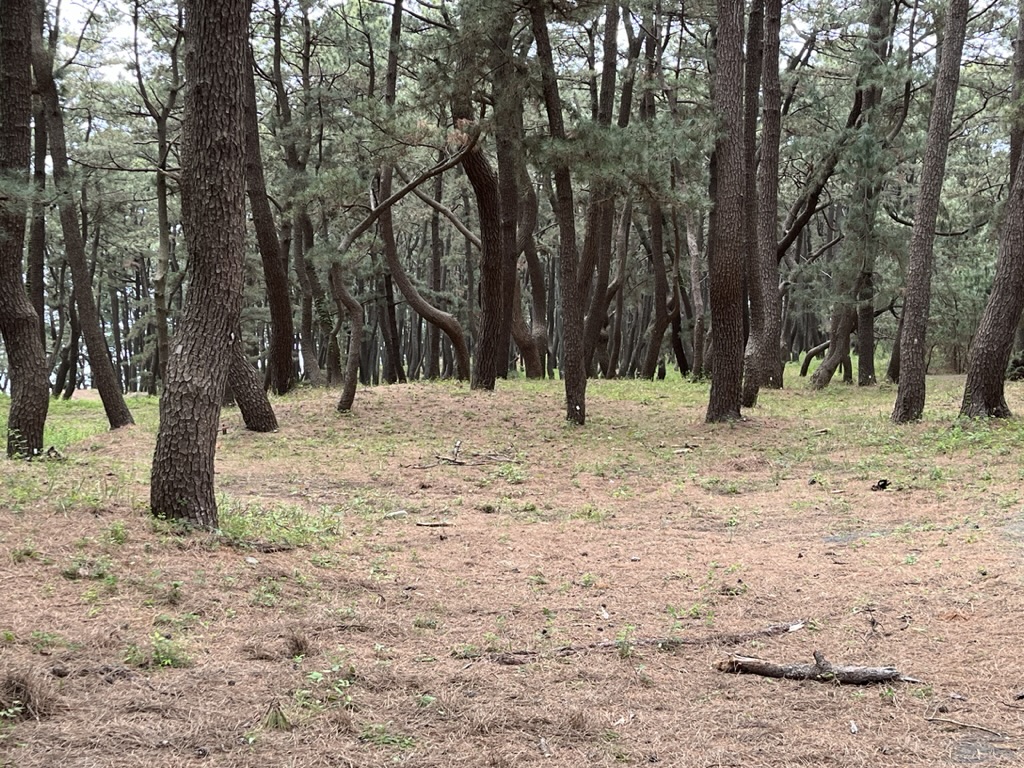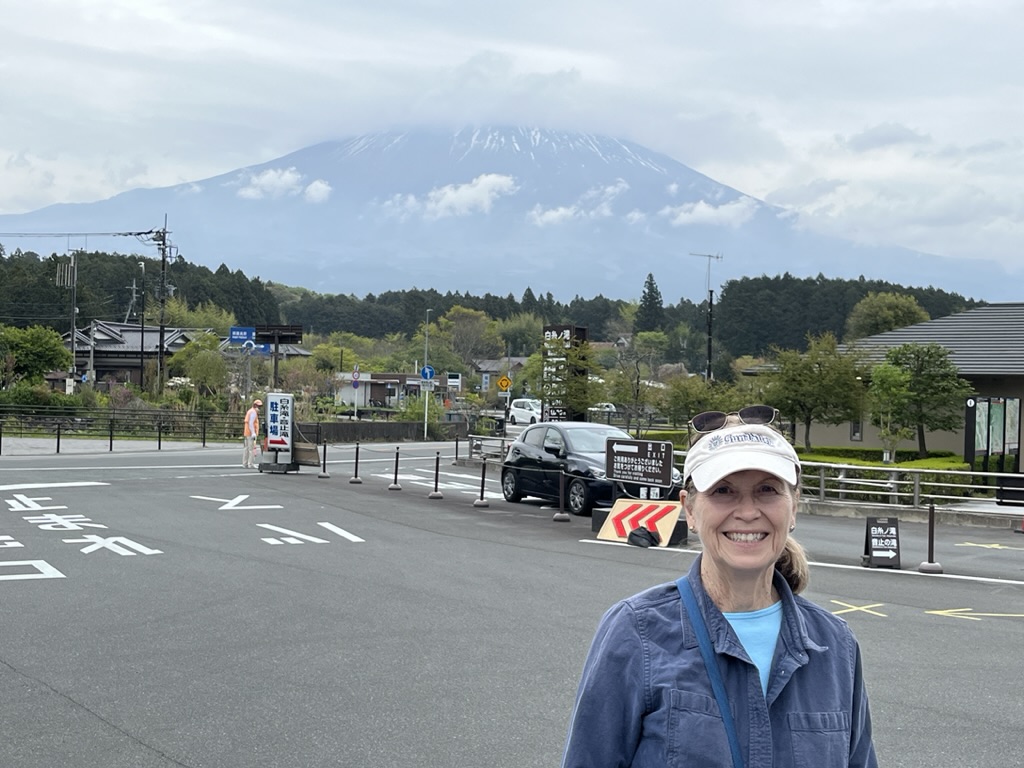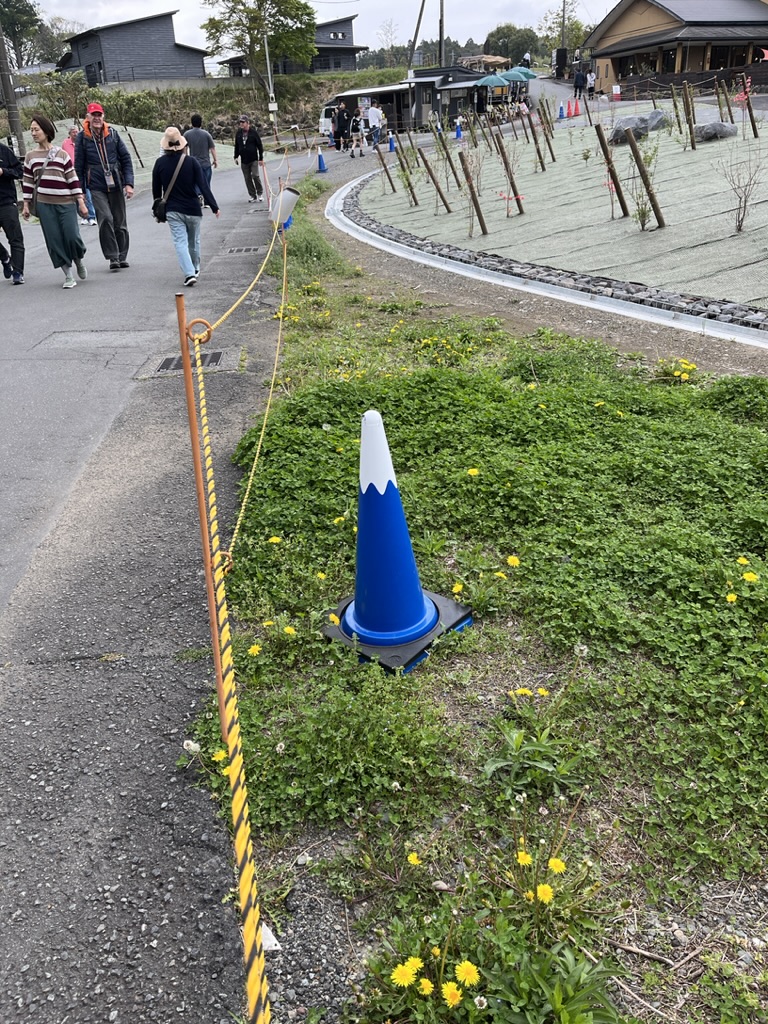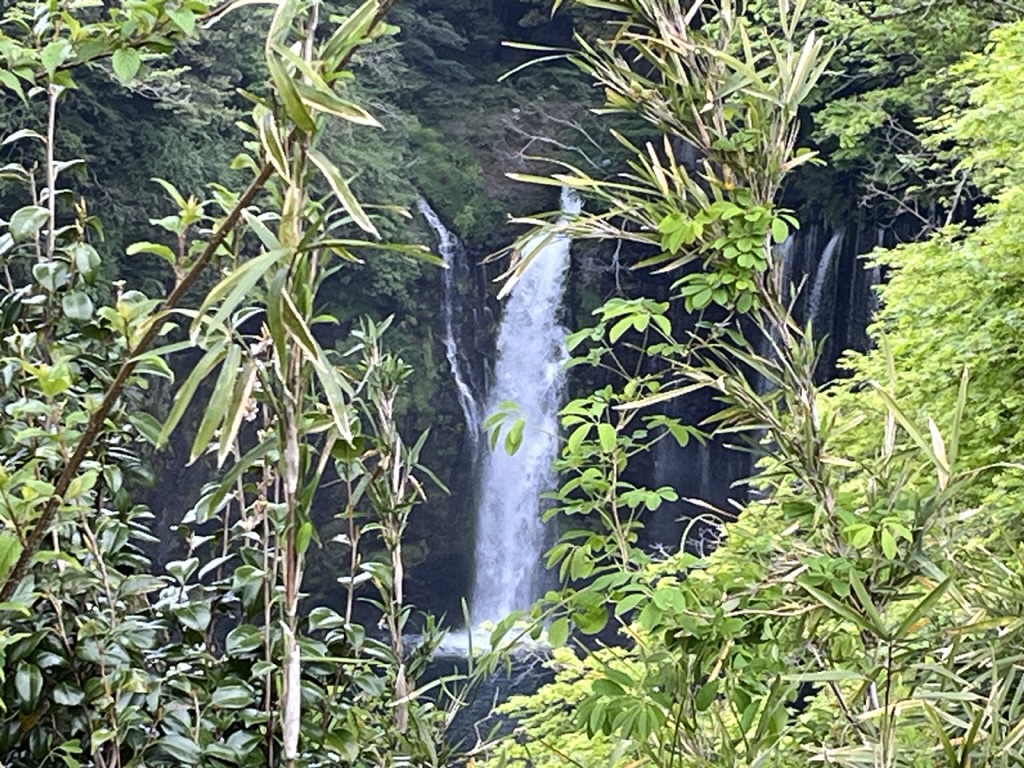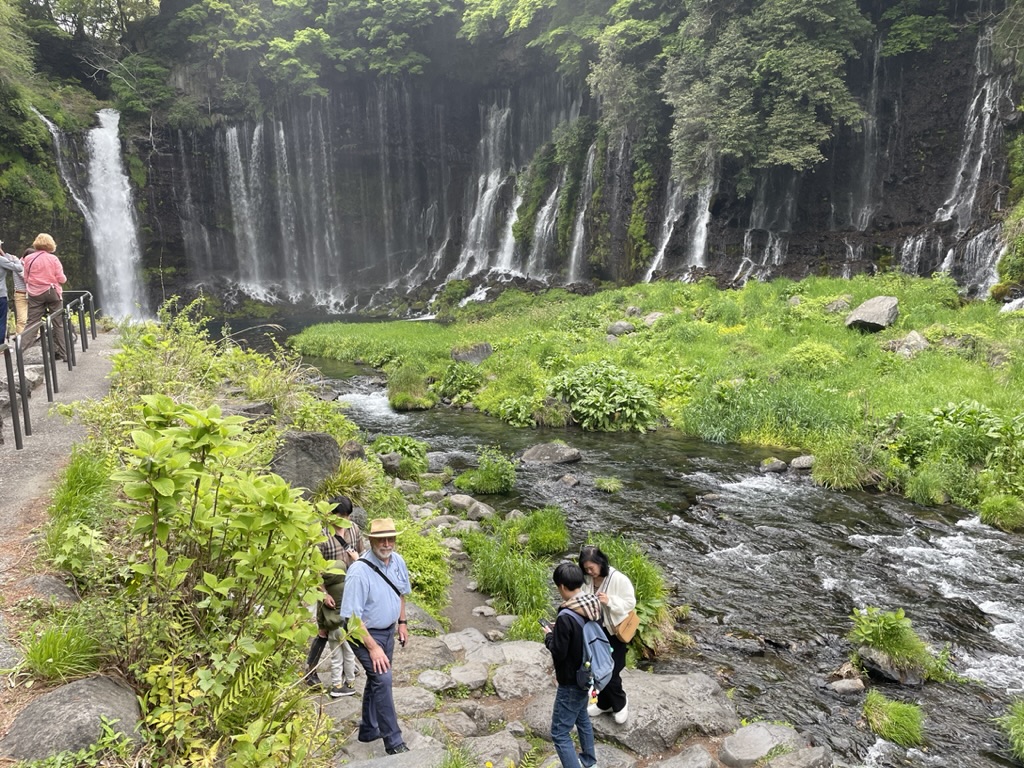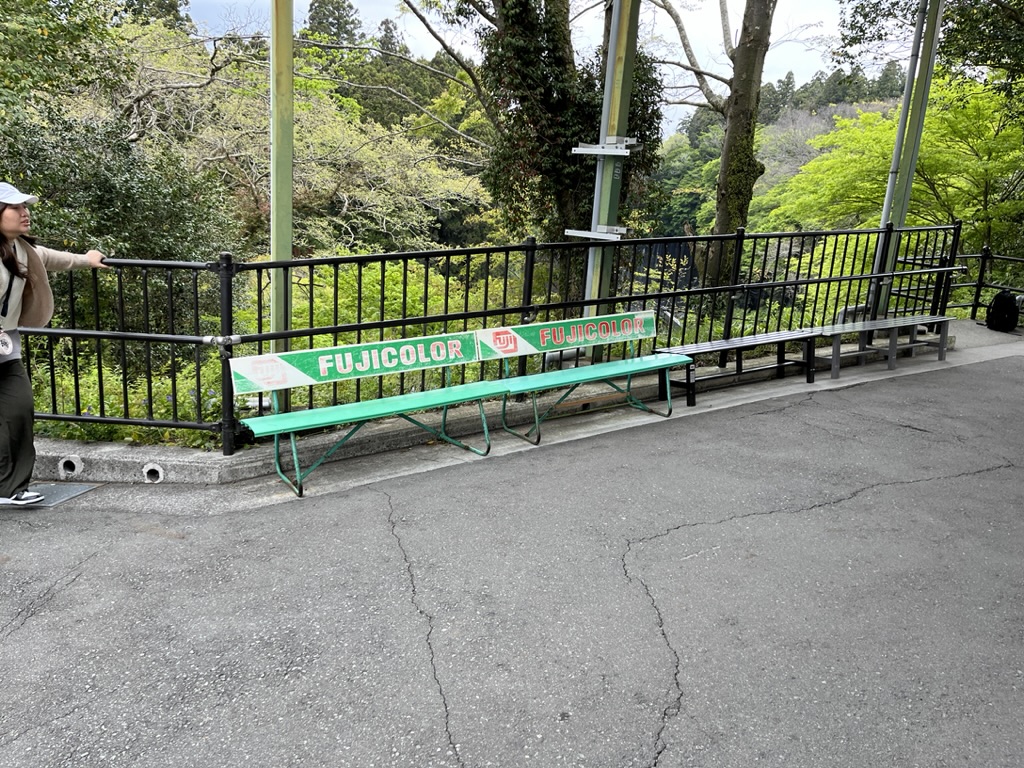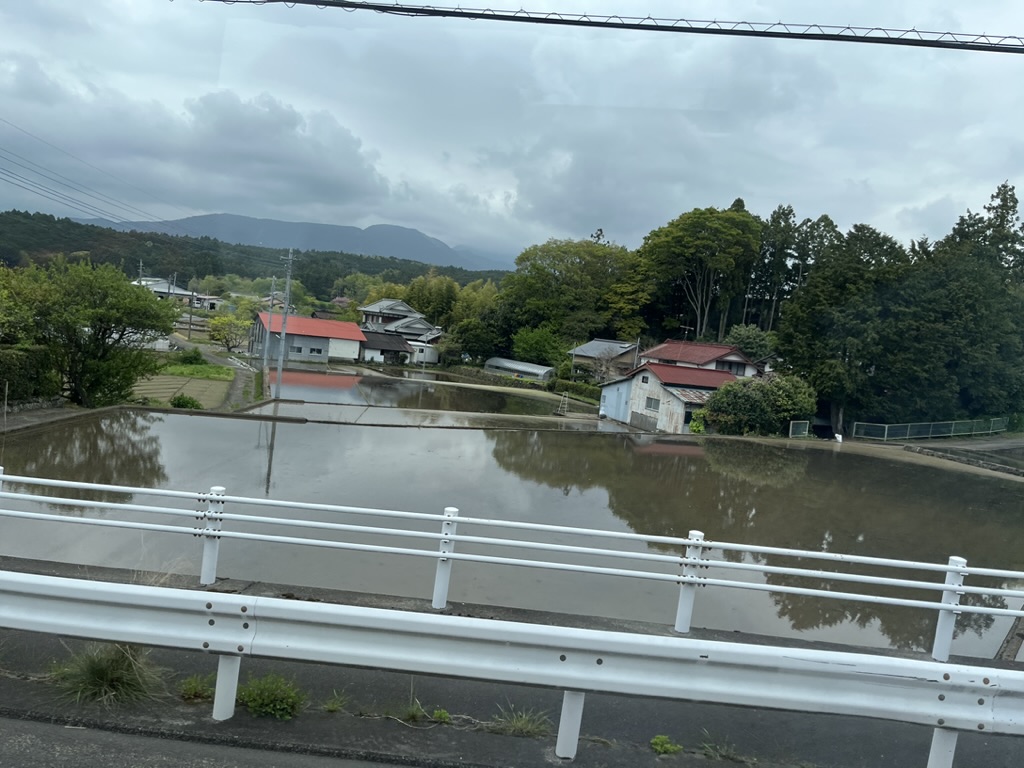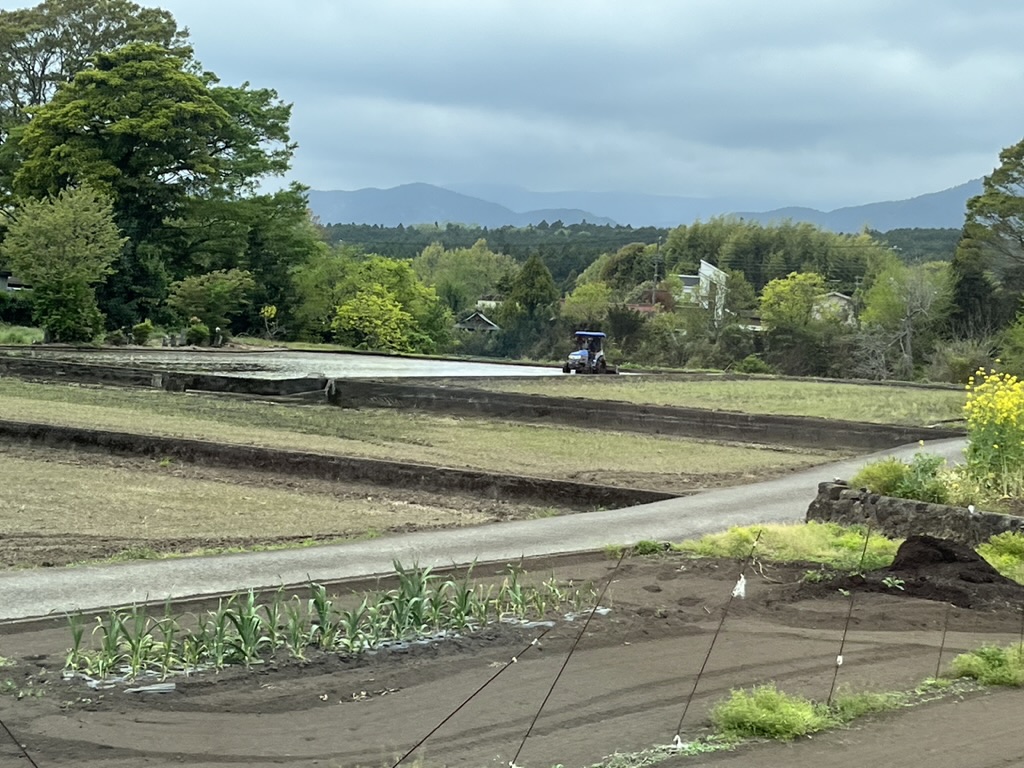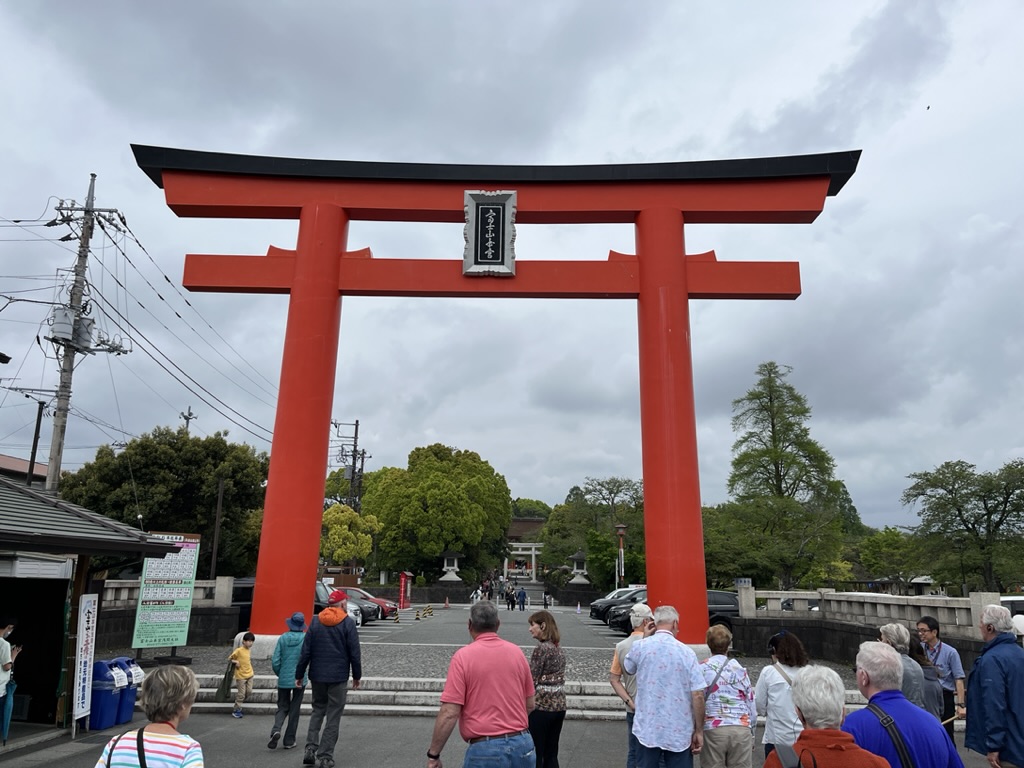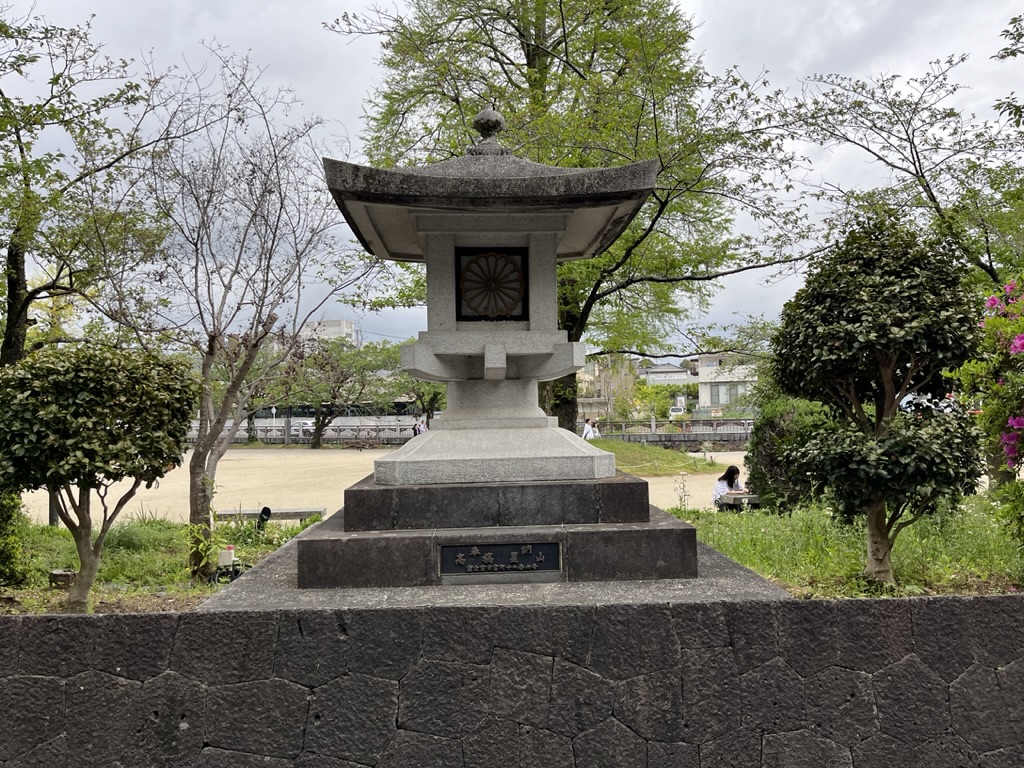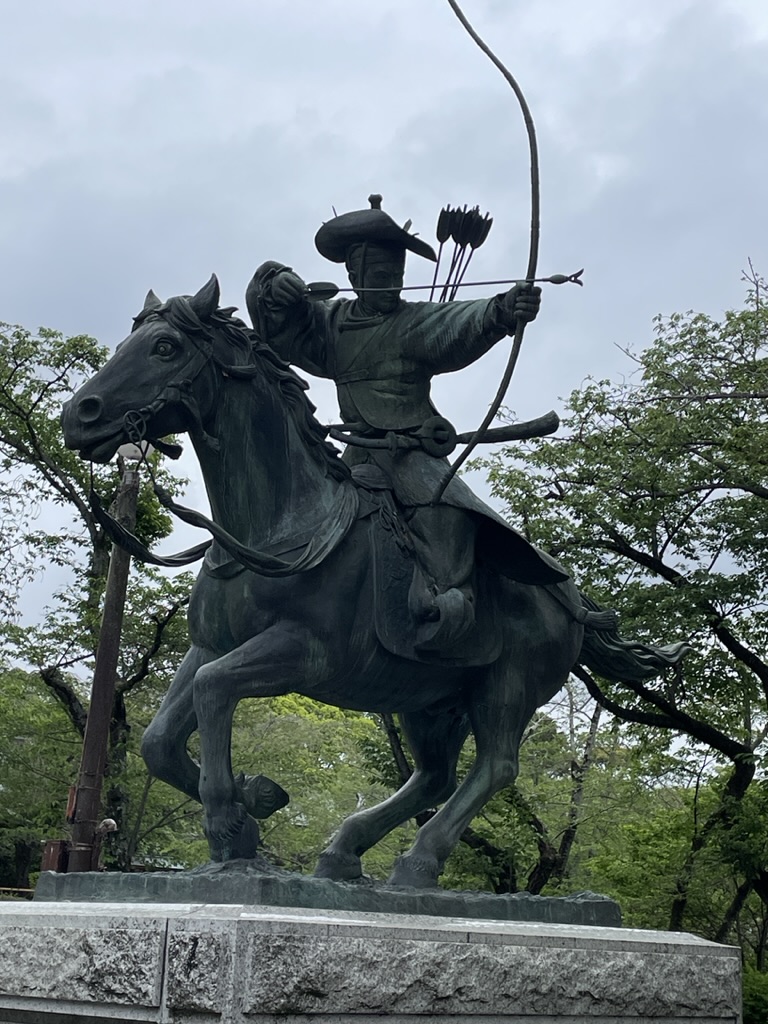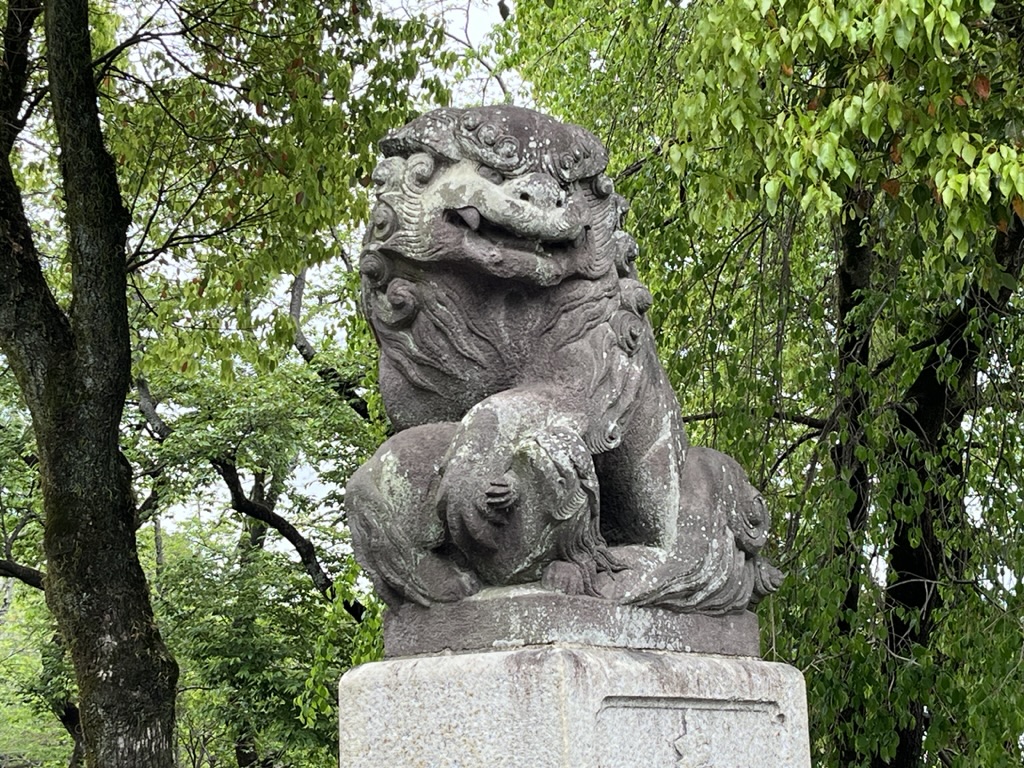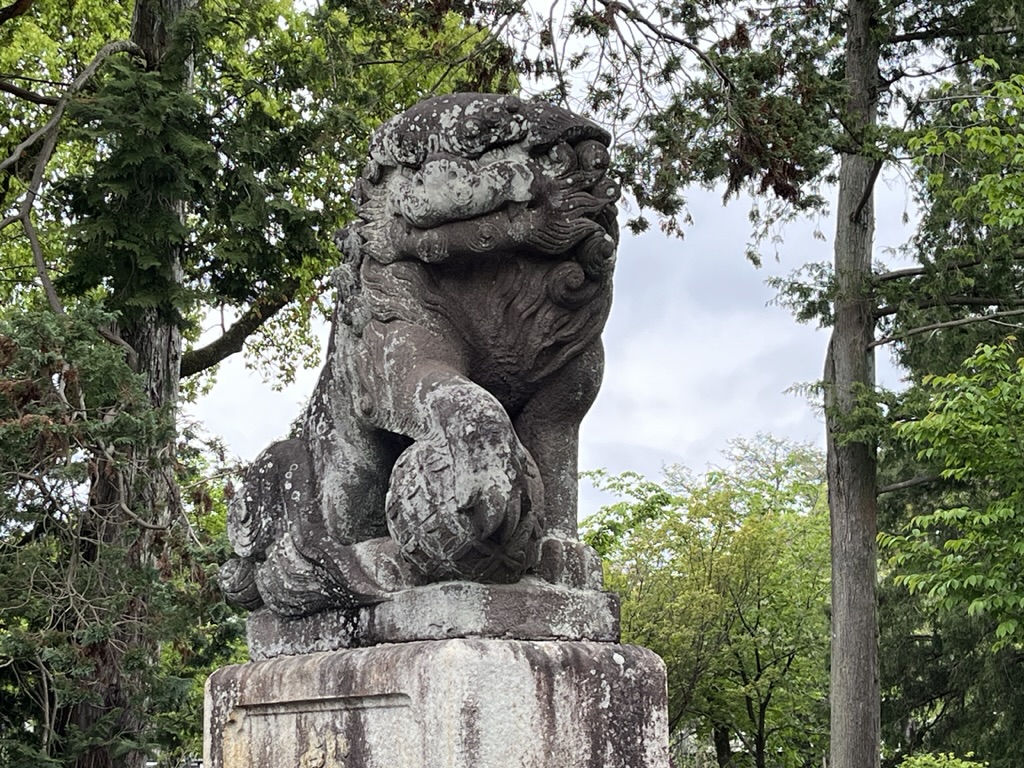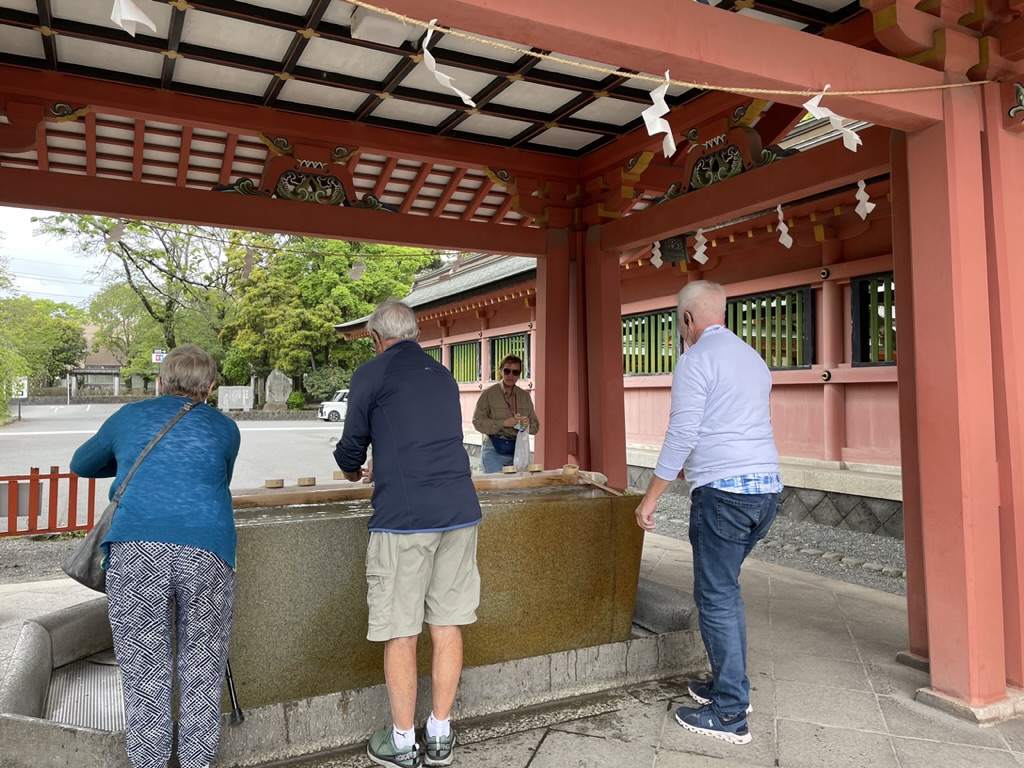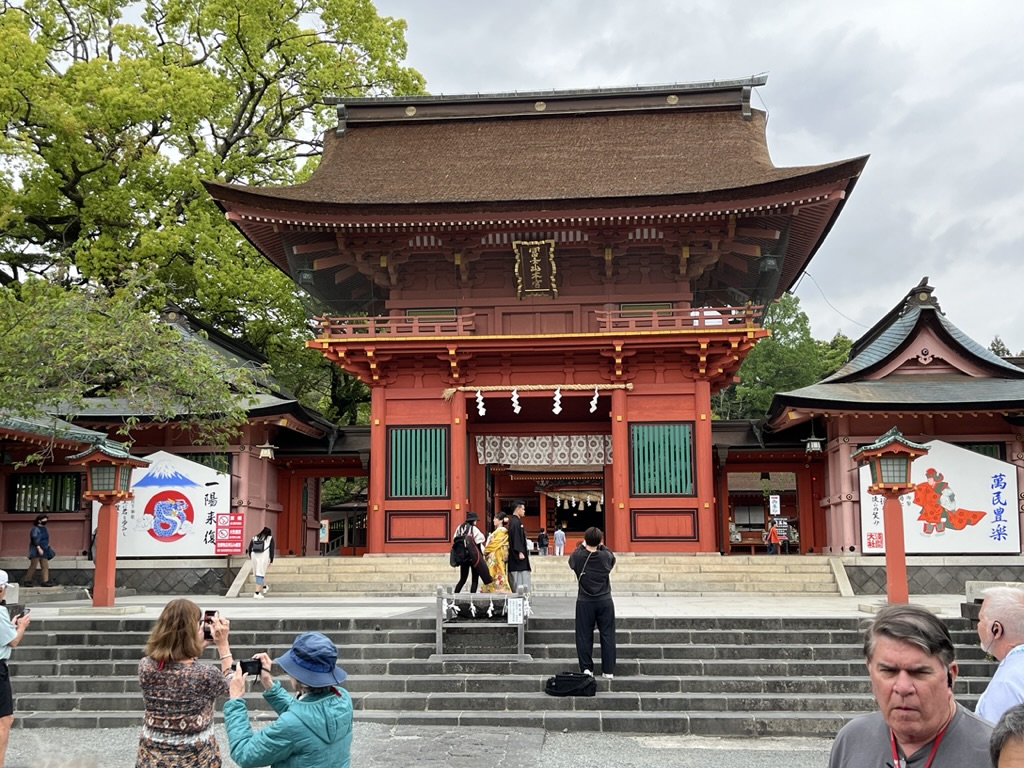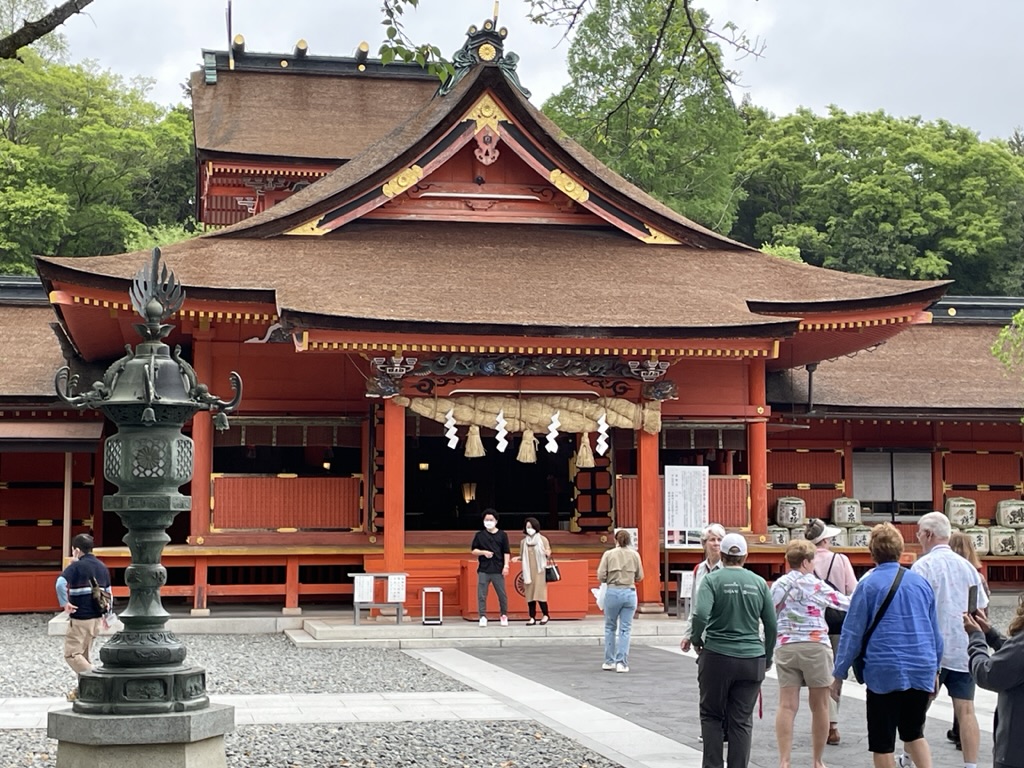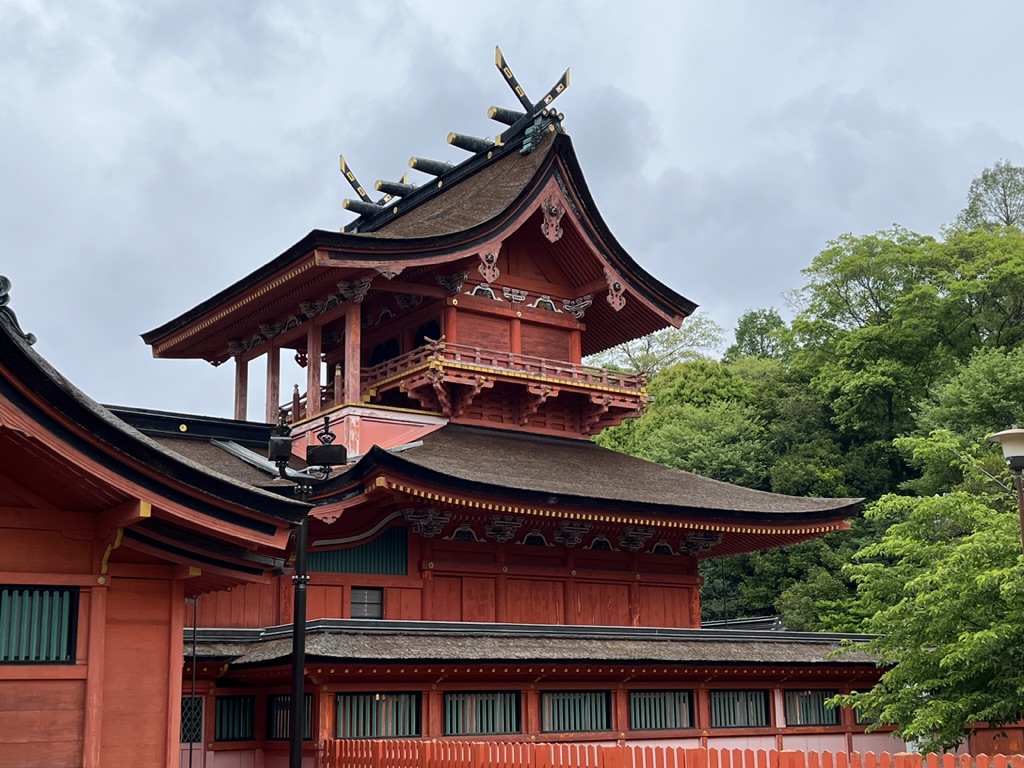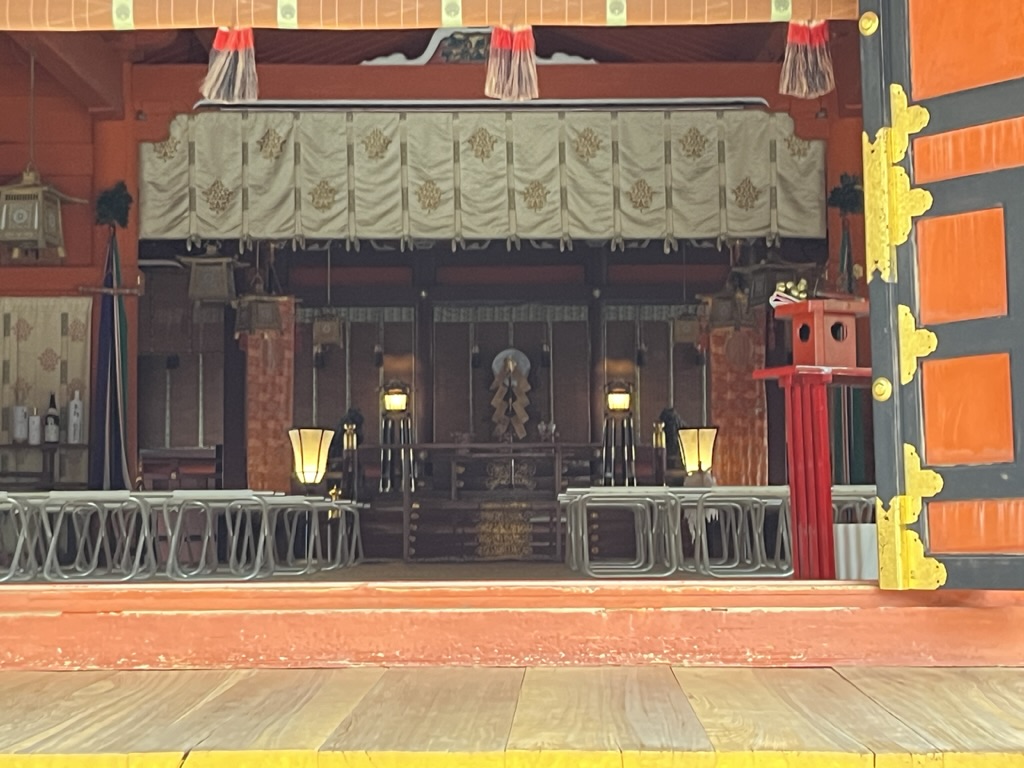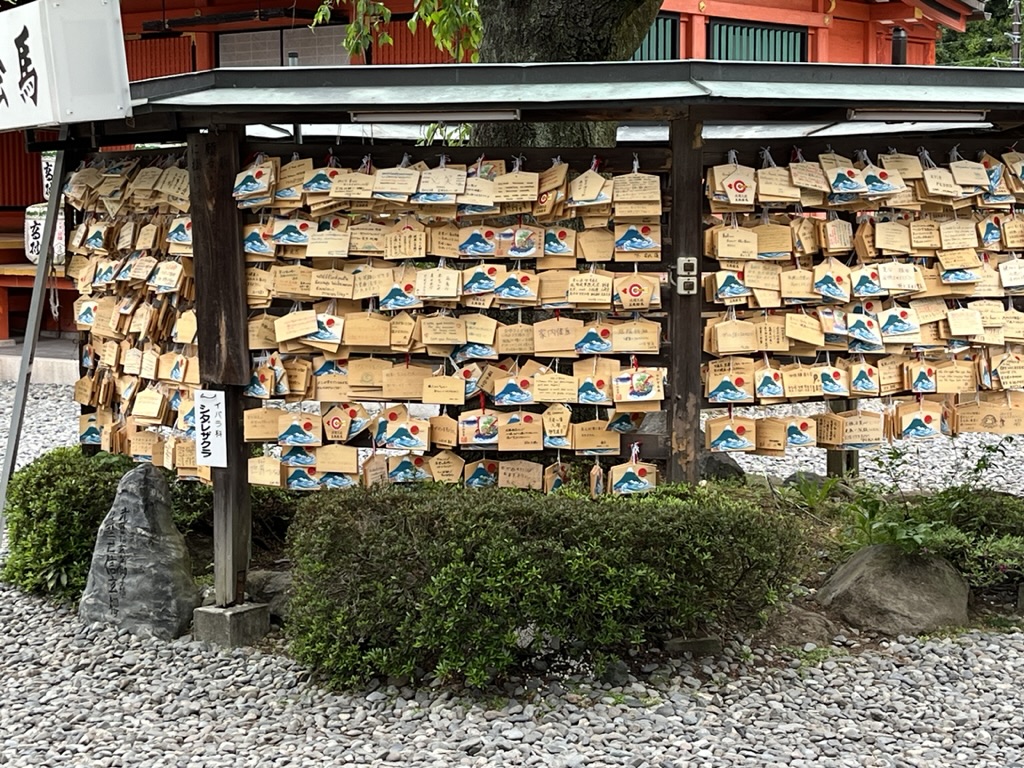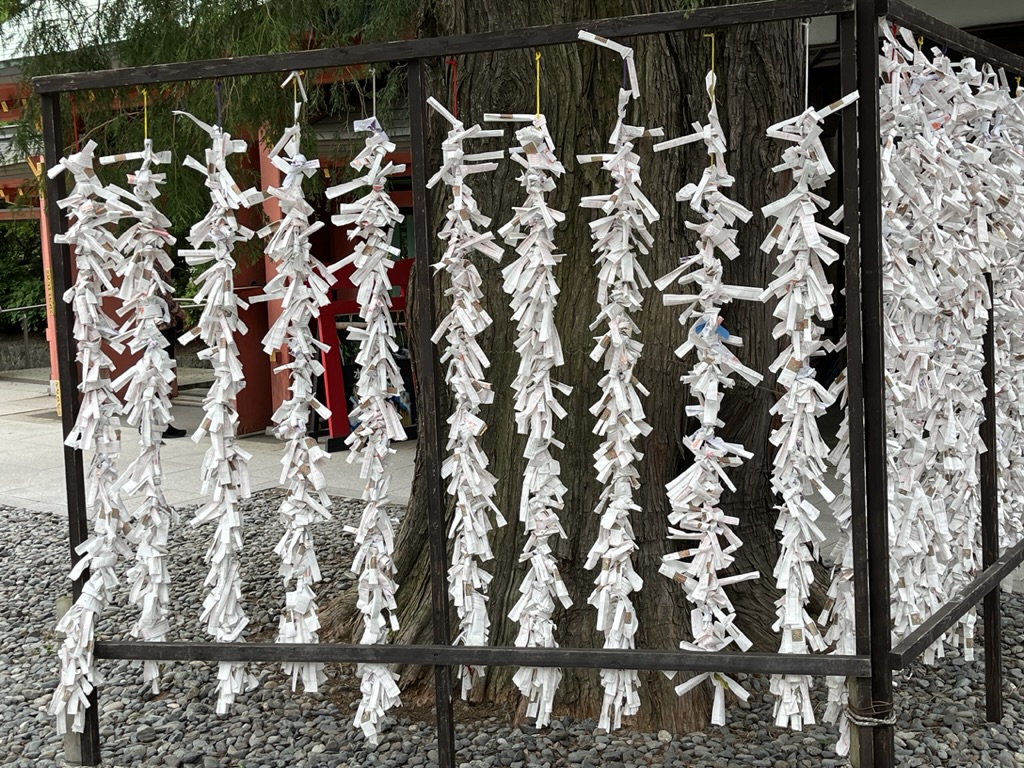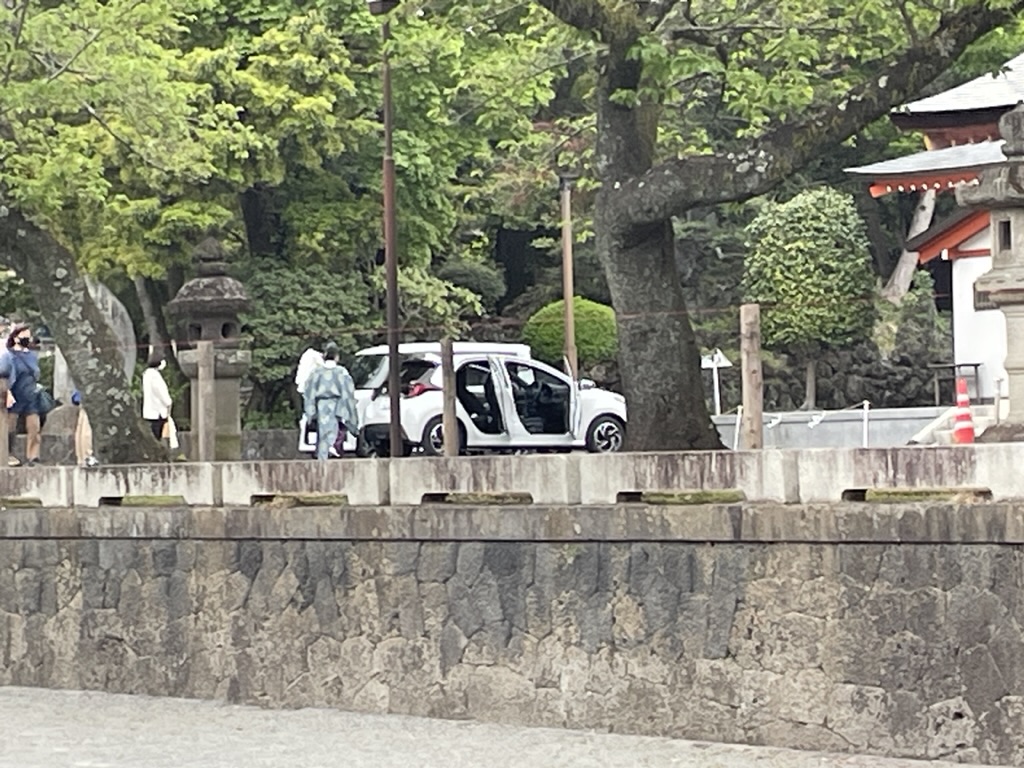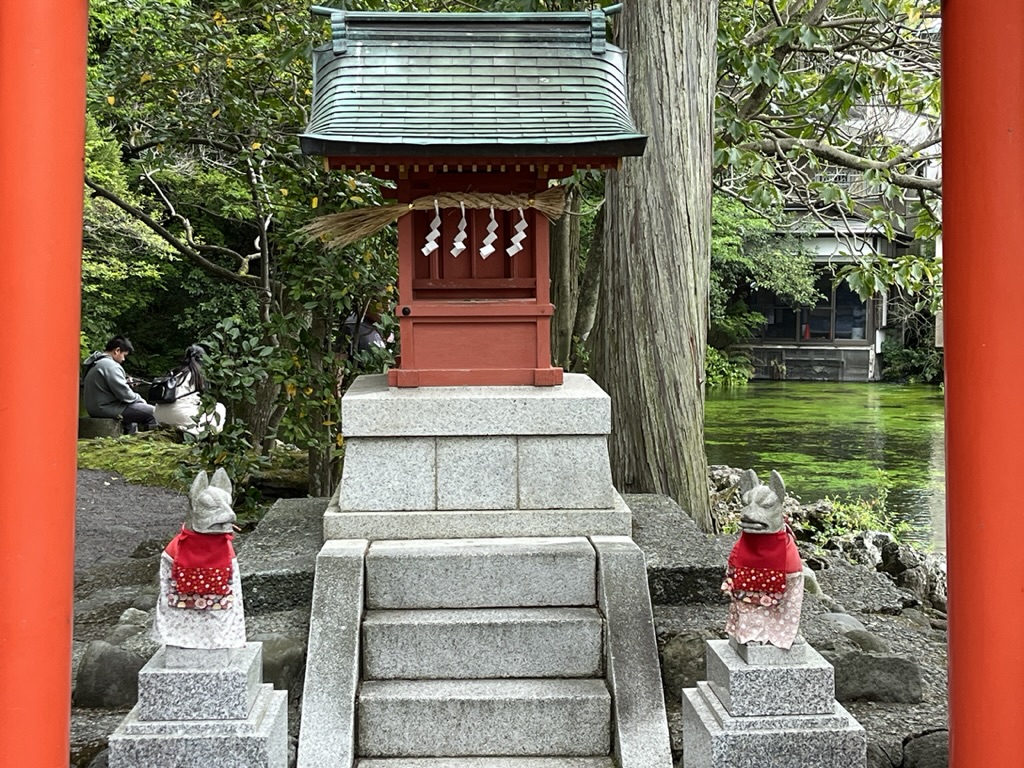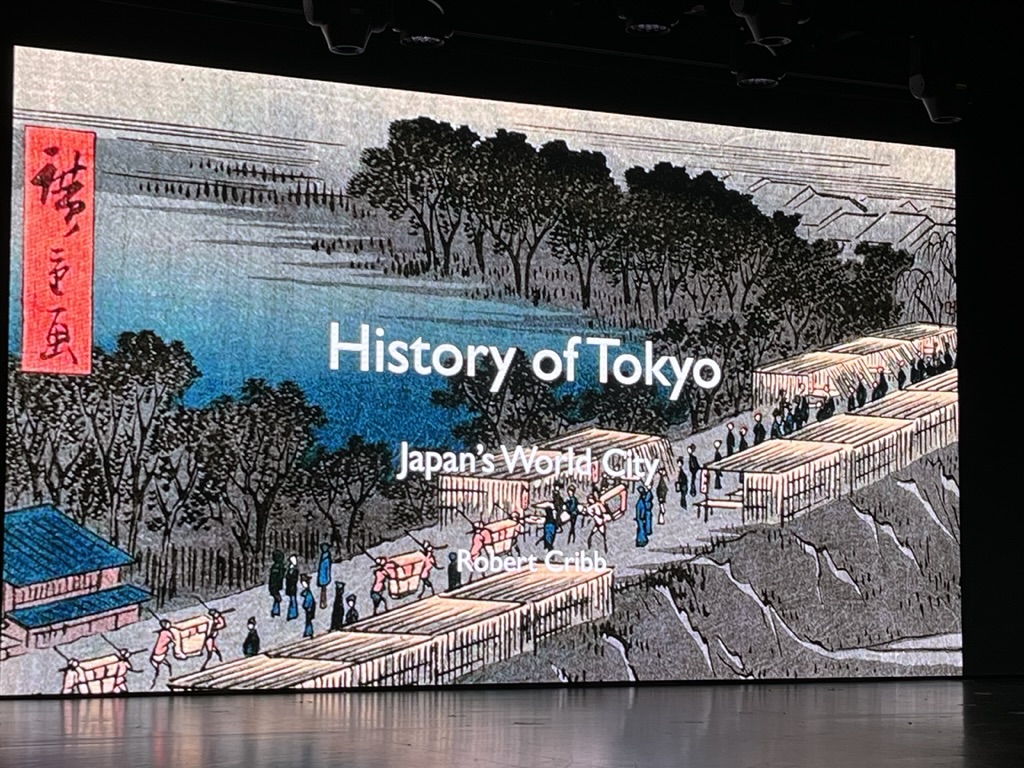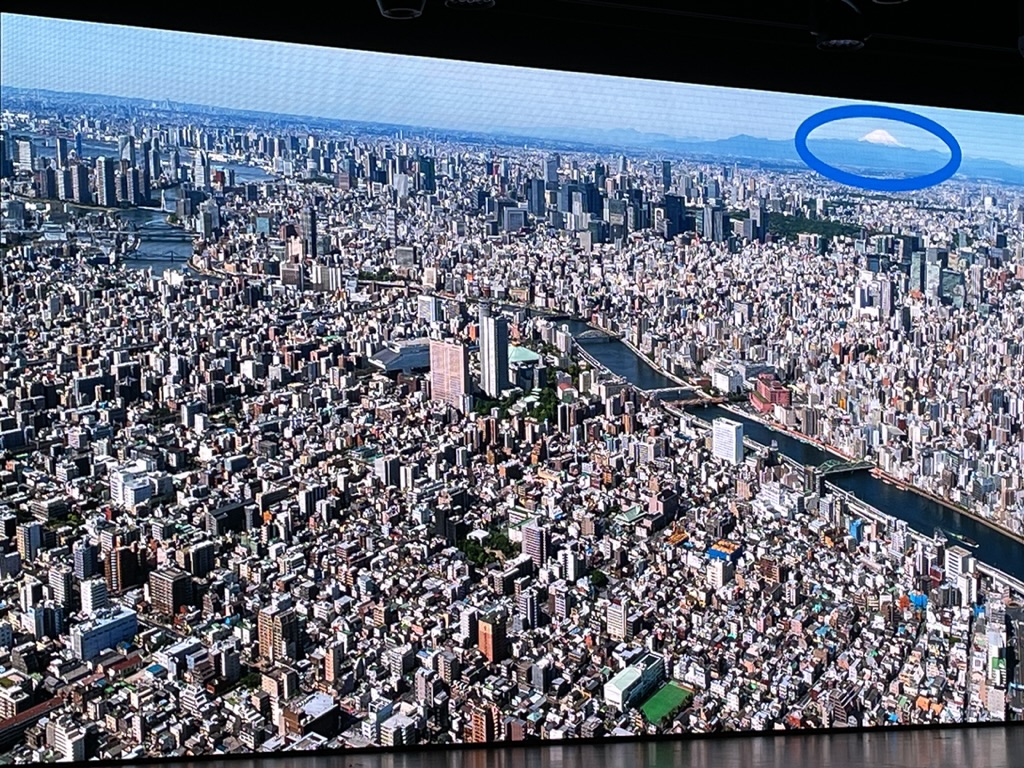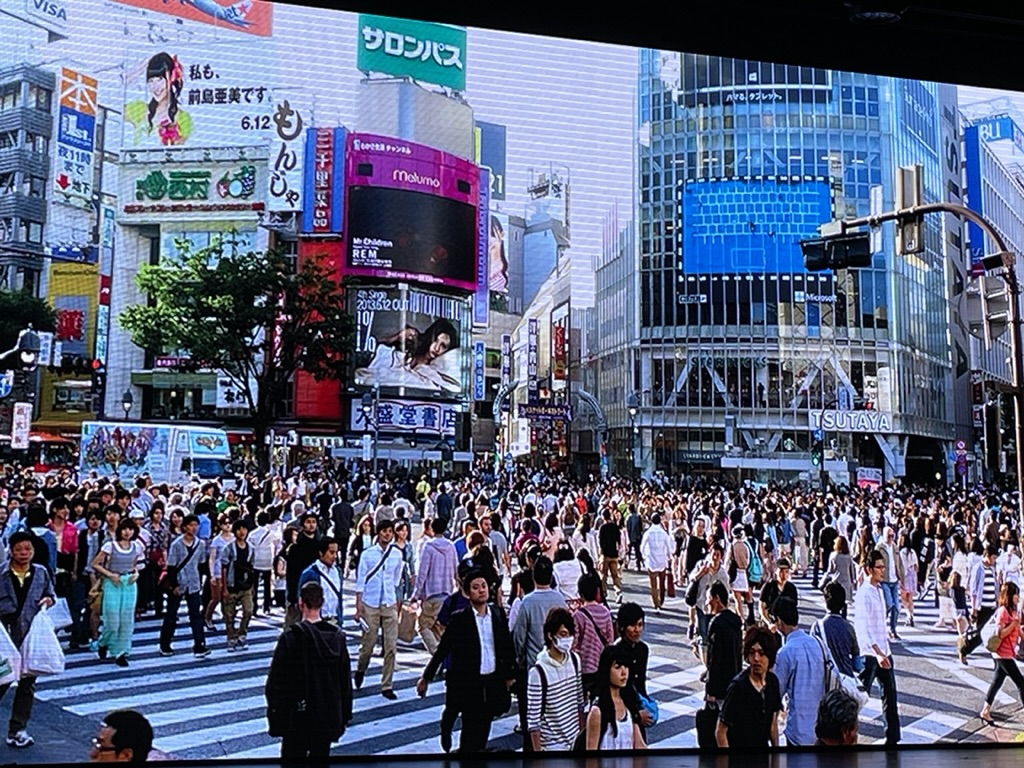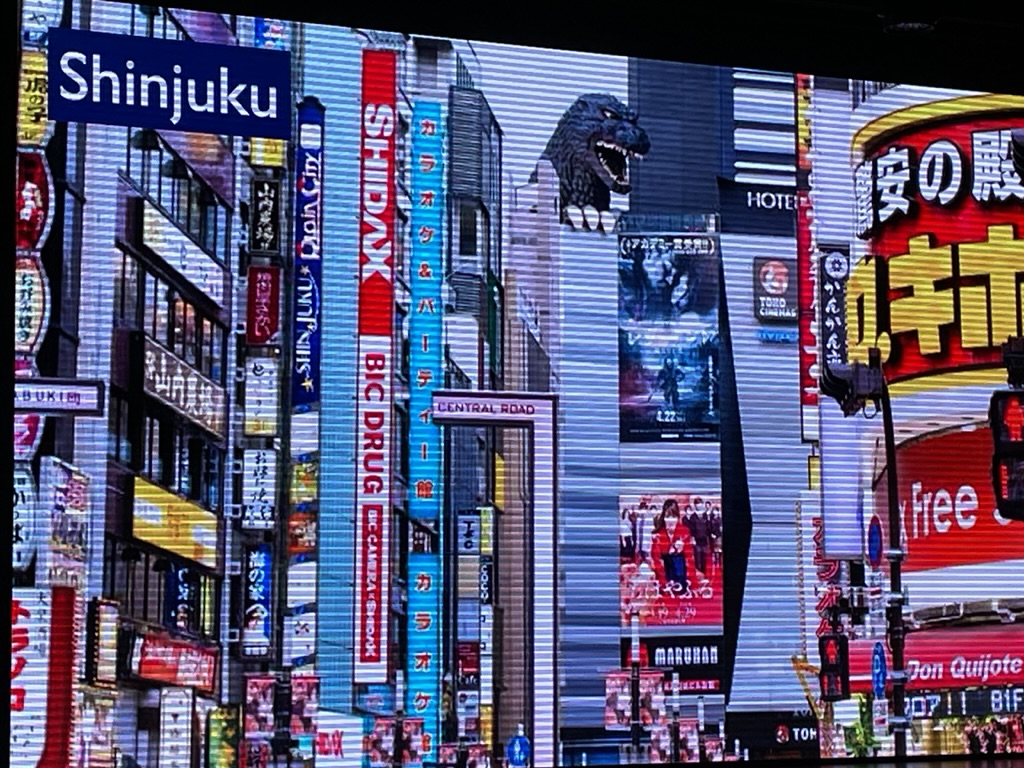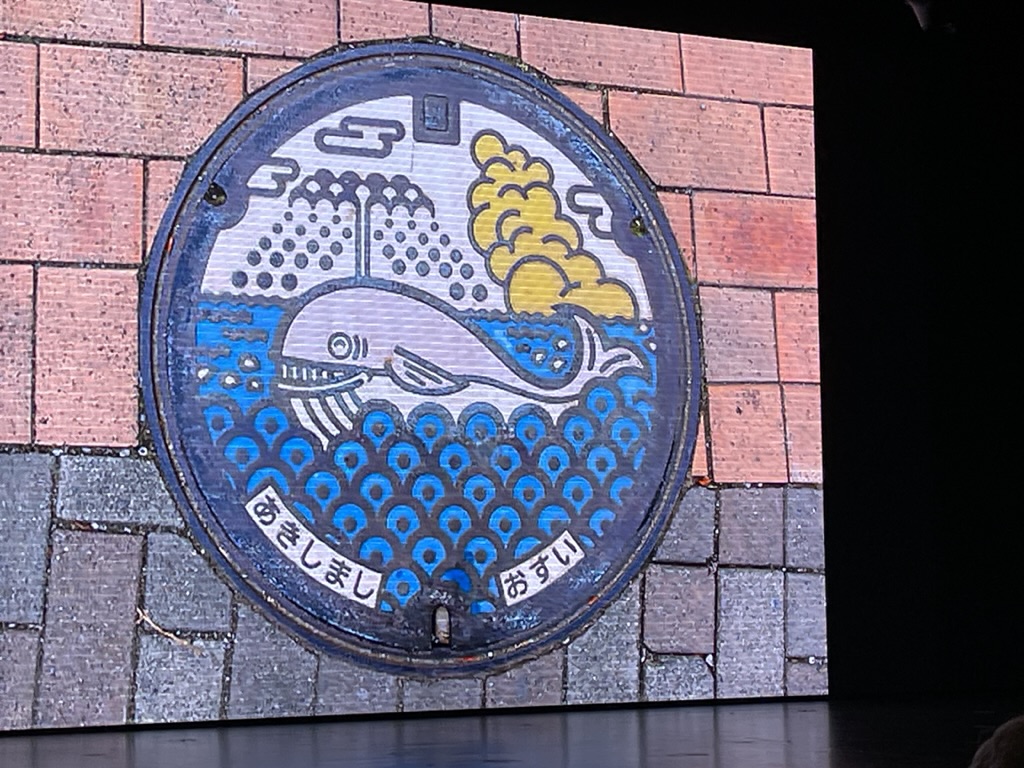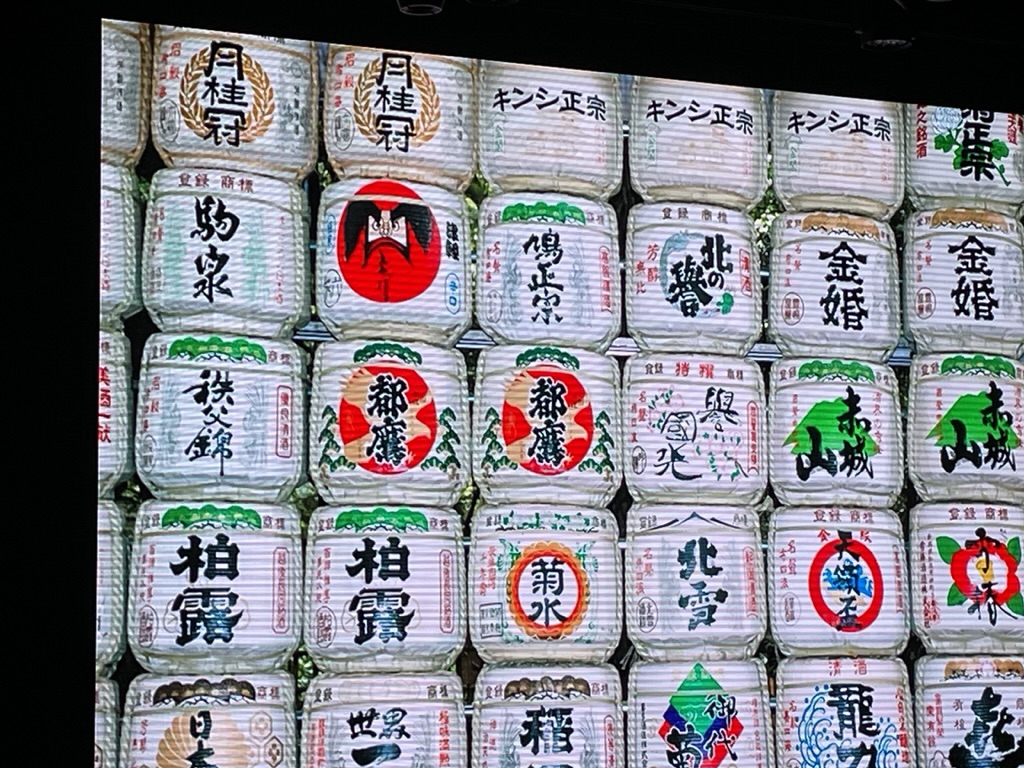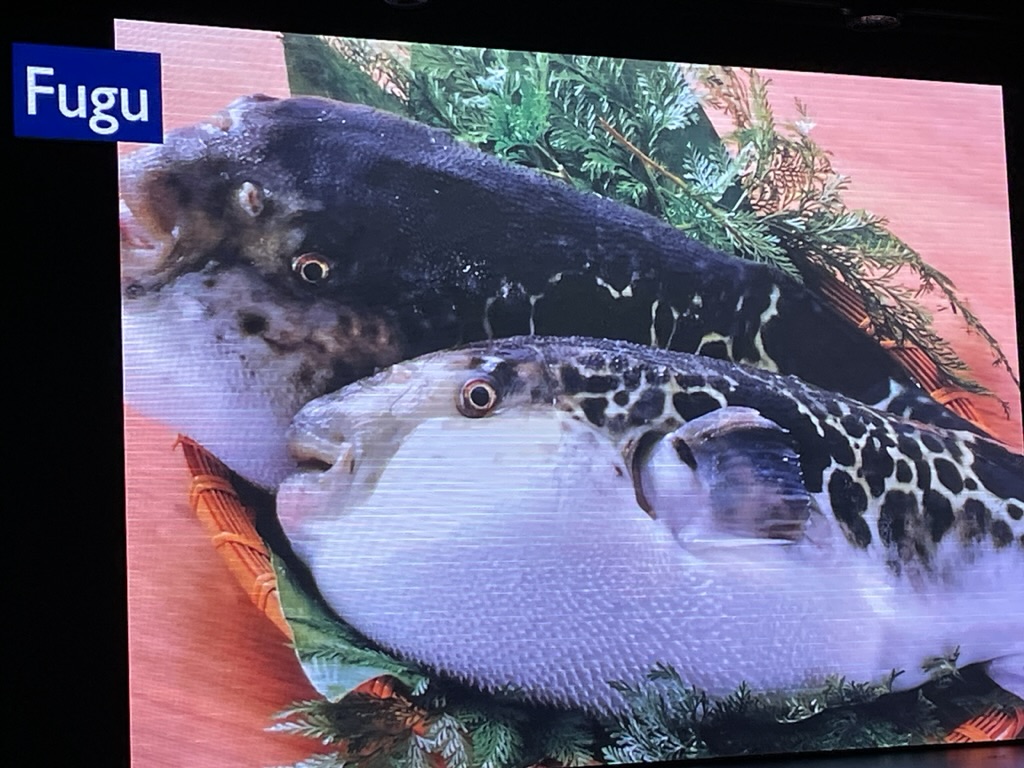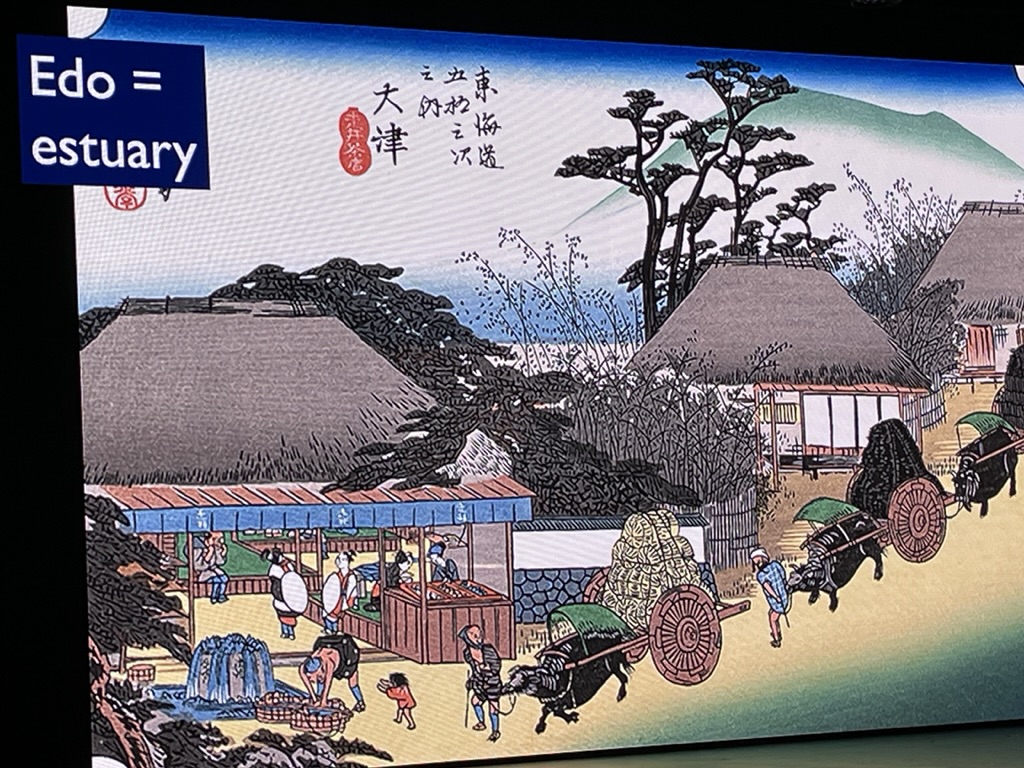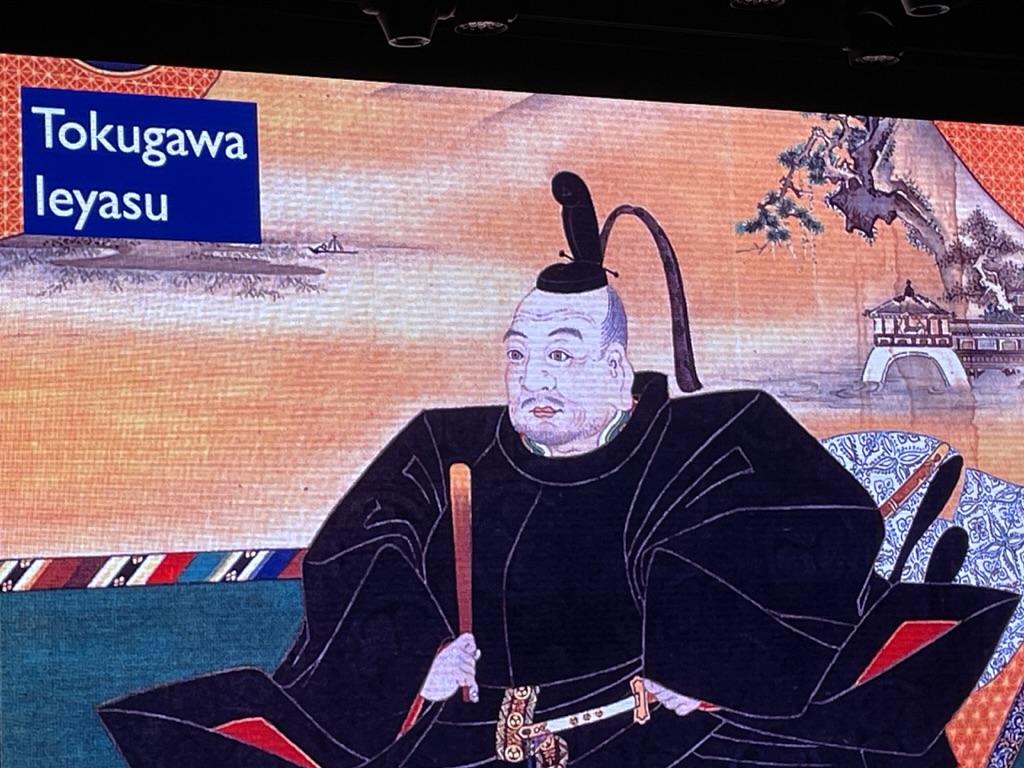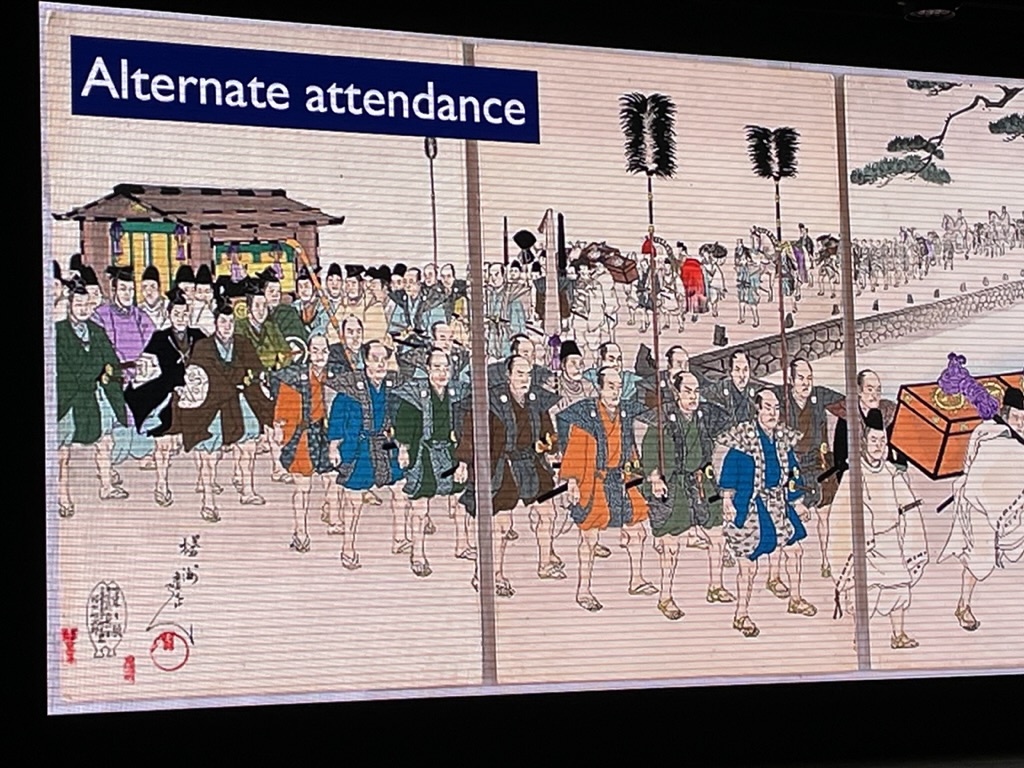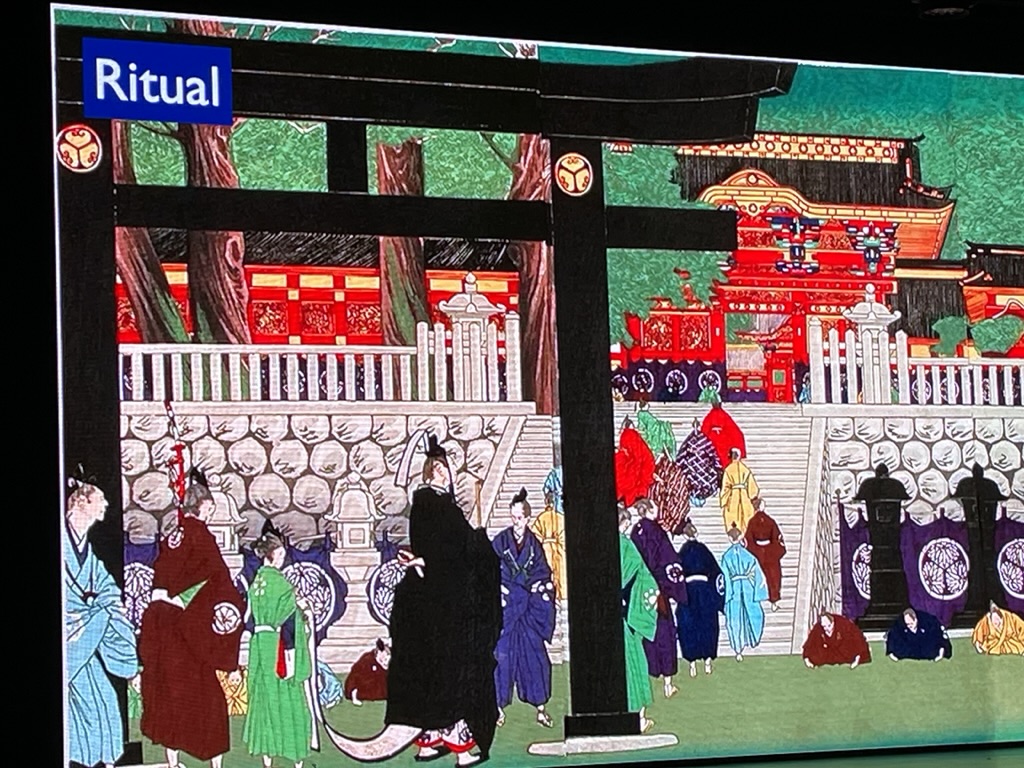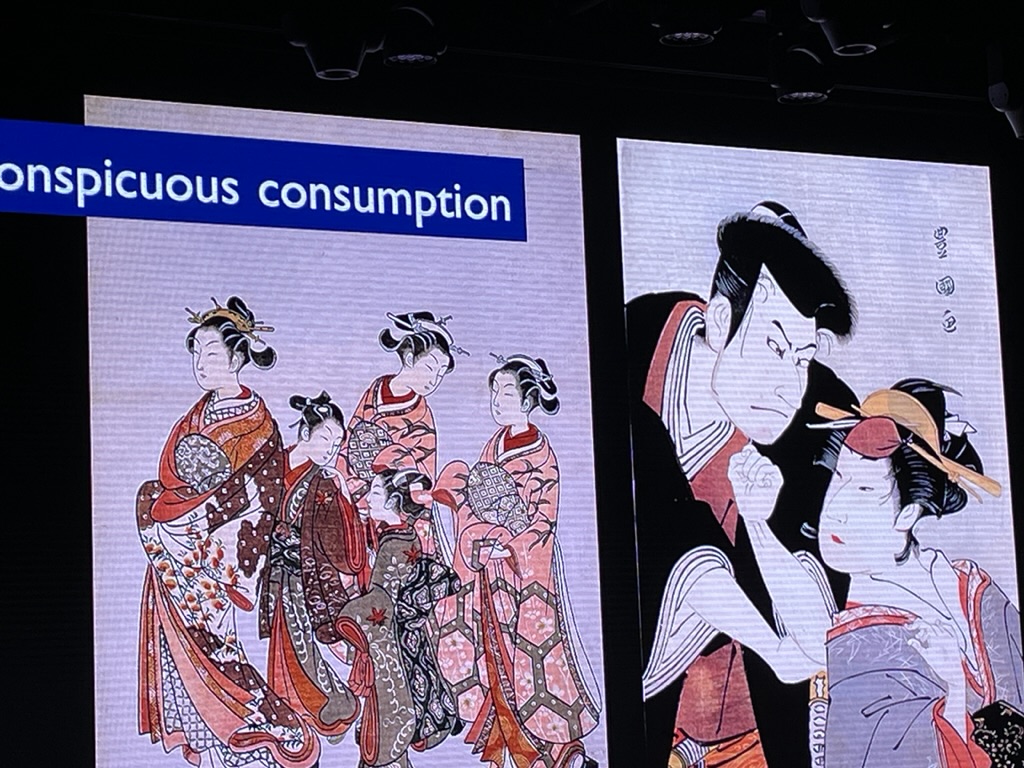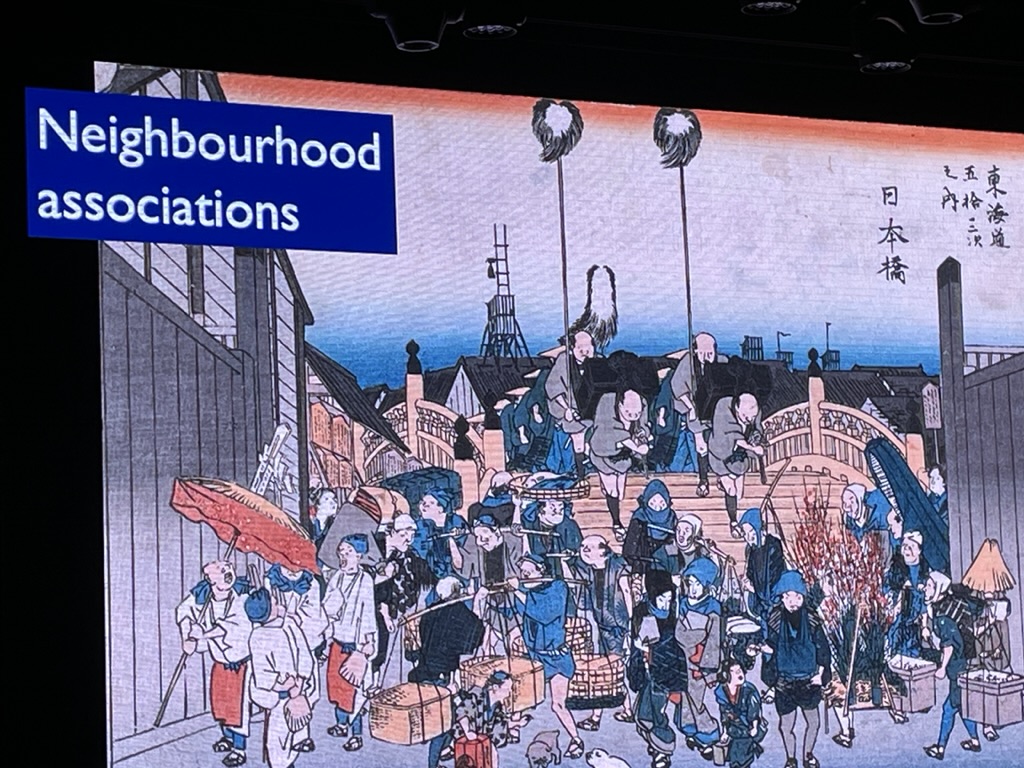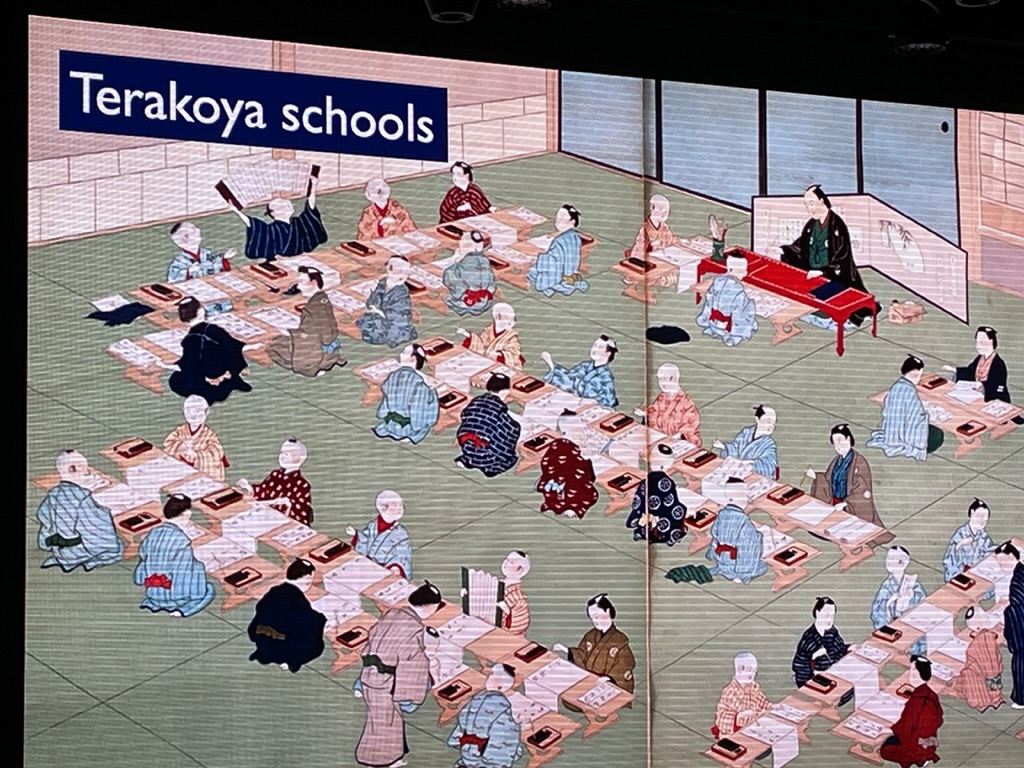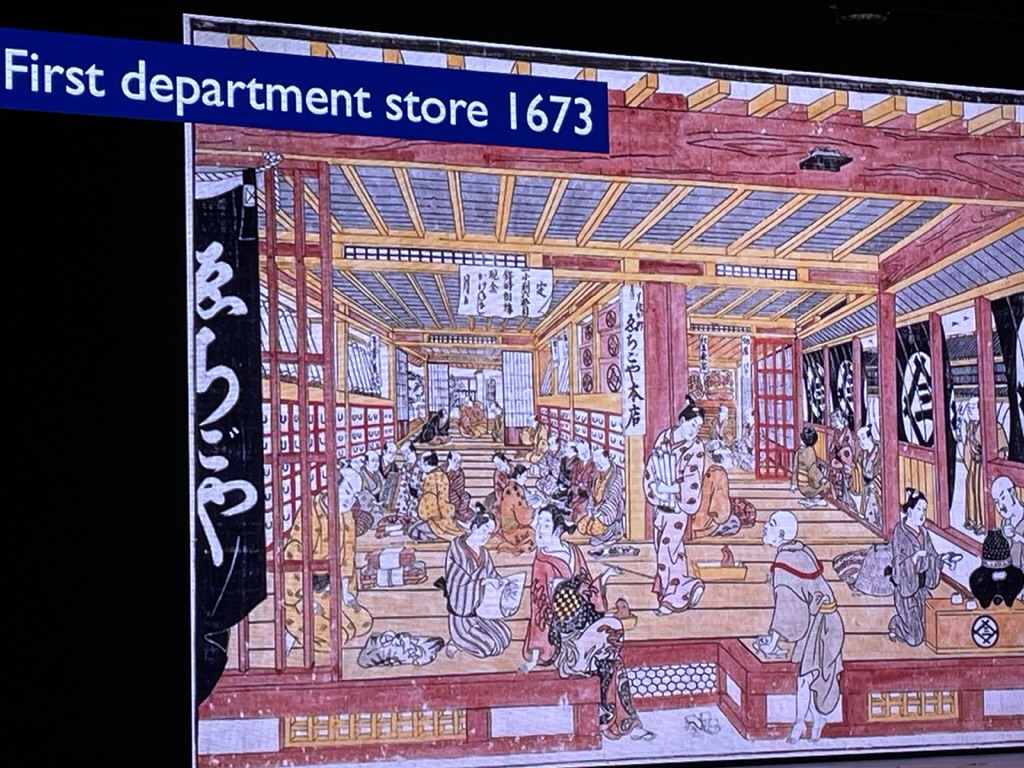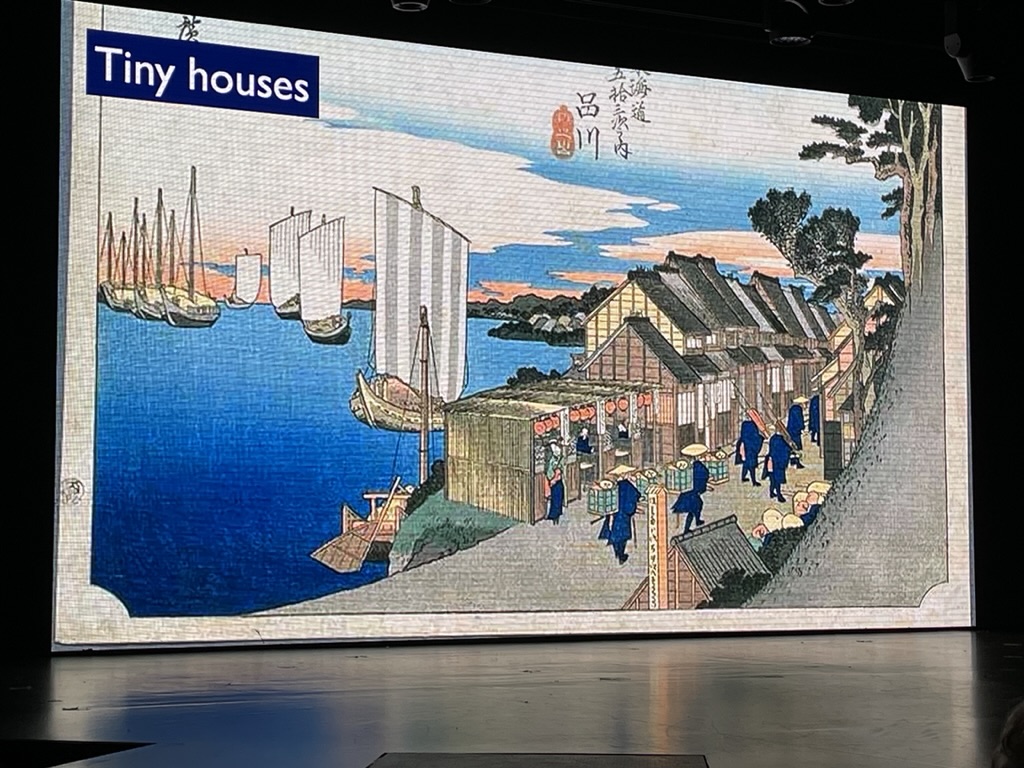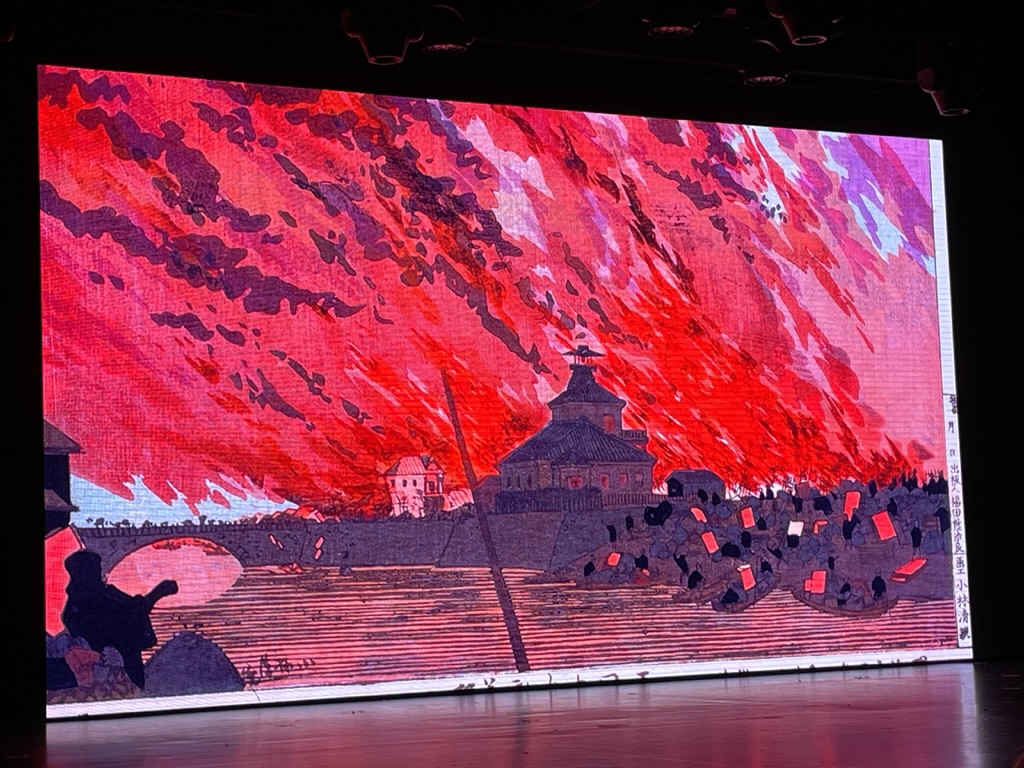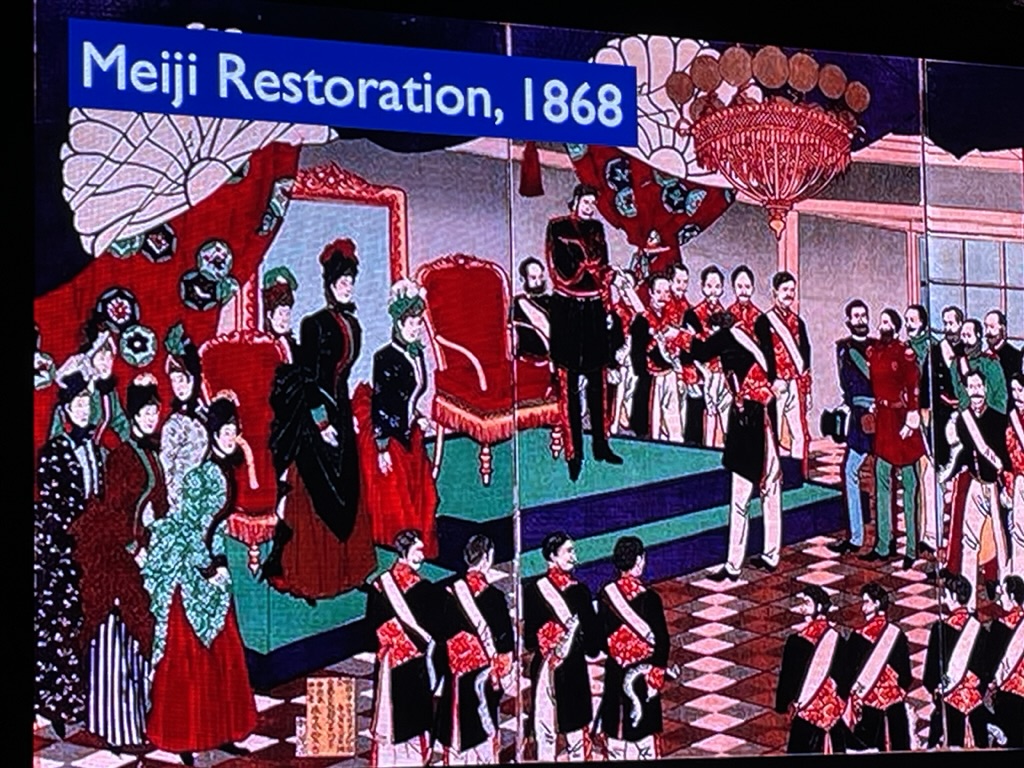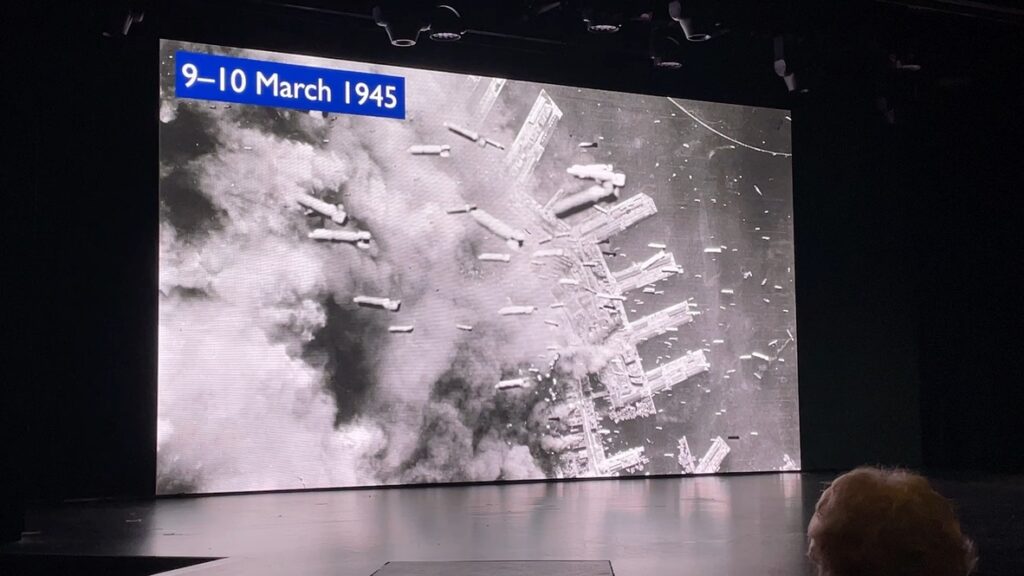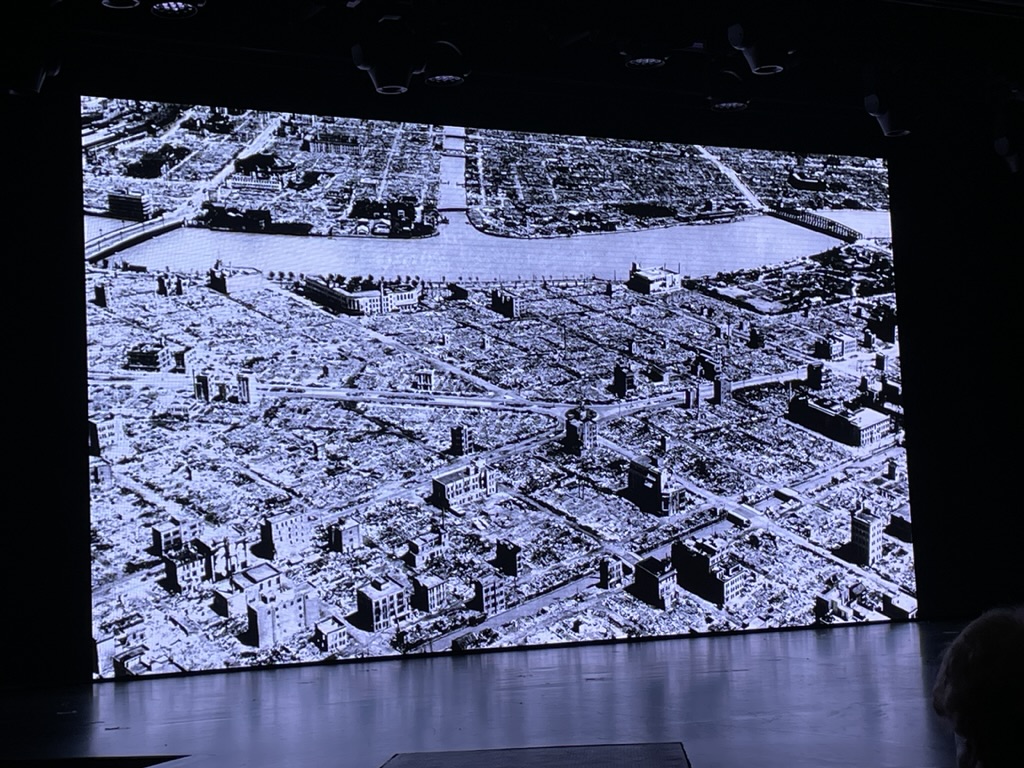Noon Report:
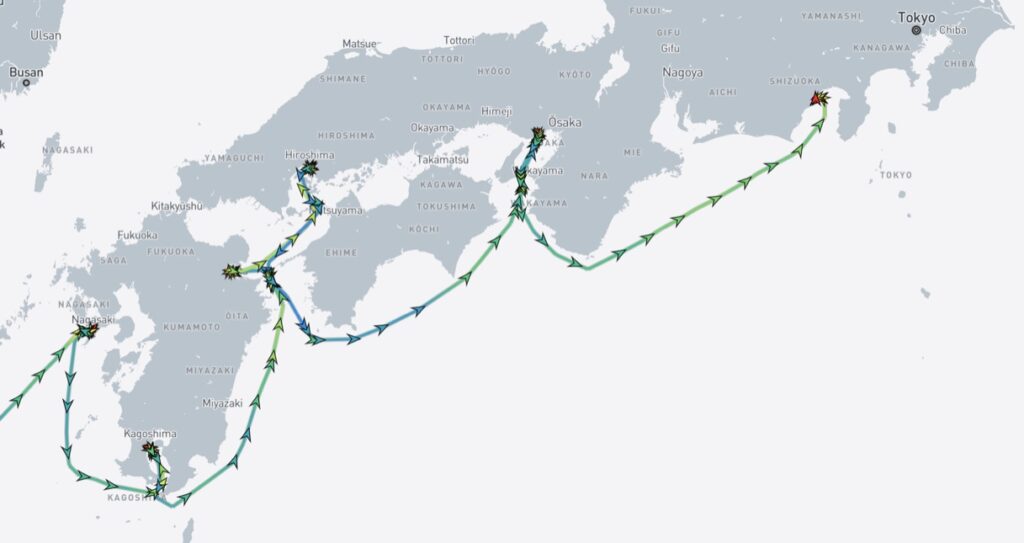
- Location: N 35° 00.56′, E 138° 29.86′
- Speed: Docked
- Course: Docked
- Weather: Overcast
- Sea: Calm
EXCURSION: Stunning vistas of Shimizu
We were greeted on the pier by Shizulla – the official mascot of the city (nothing to do with Pokemon).

Mt. Fuji Viewing Center
After mugging for the camera we boarded the bus to view the wonders awaiting.
On the way our tour guide talked about the tectonic forces that created Mt. Fuji
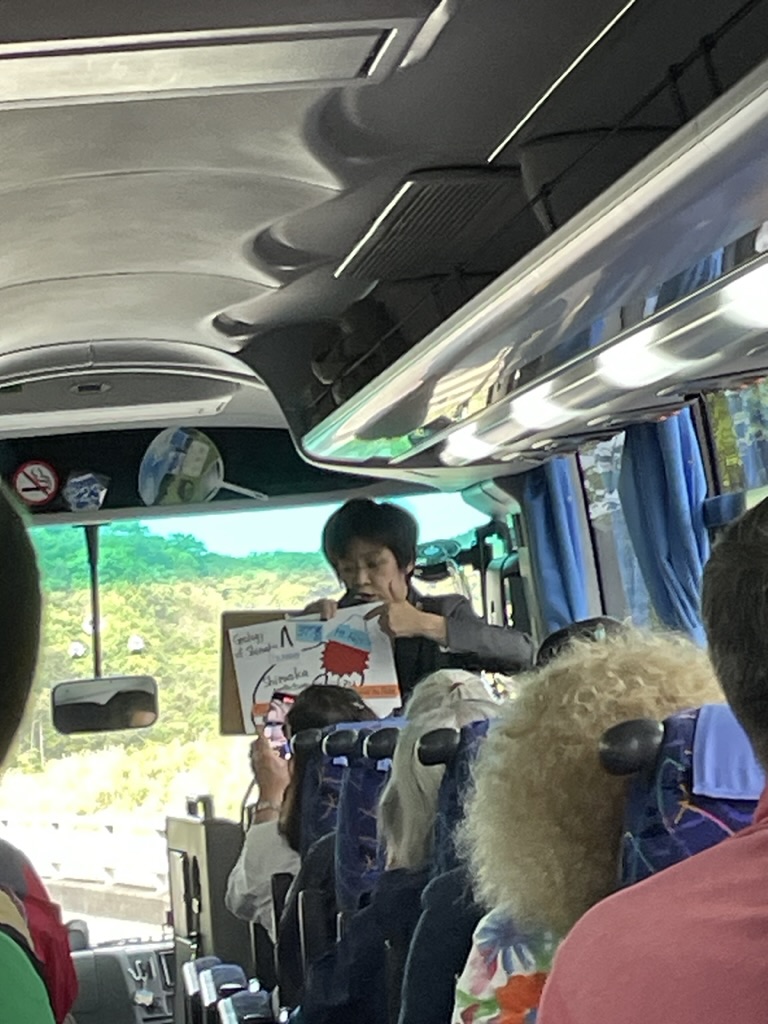
Check the red ‘explosion’ symbol. That’s where 4 plates collided (“Boom!”) to form the volcano that created Mt. Fuji.
Arriving at the viewpoint for seeing the mountain we saw some beautiful flowers.
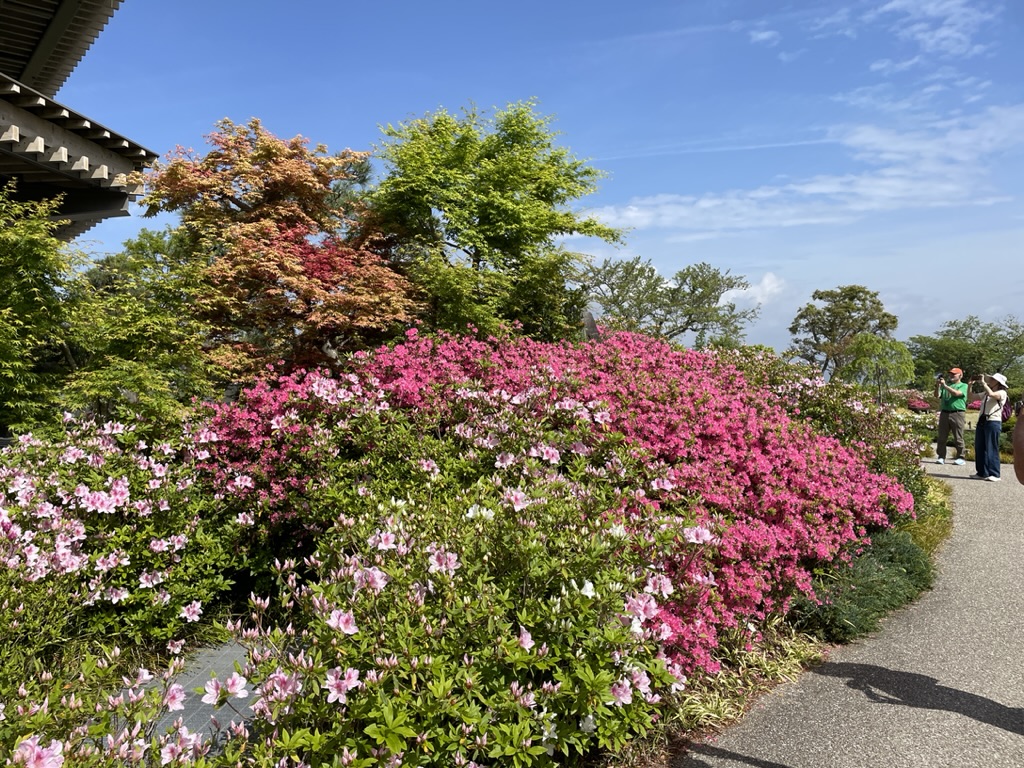
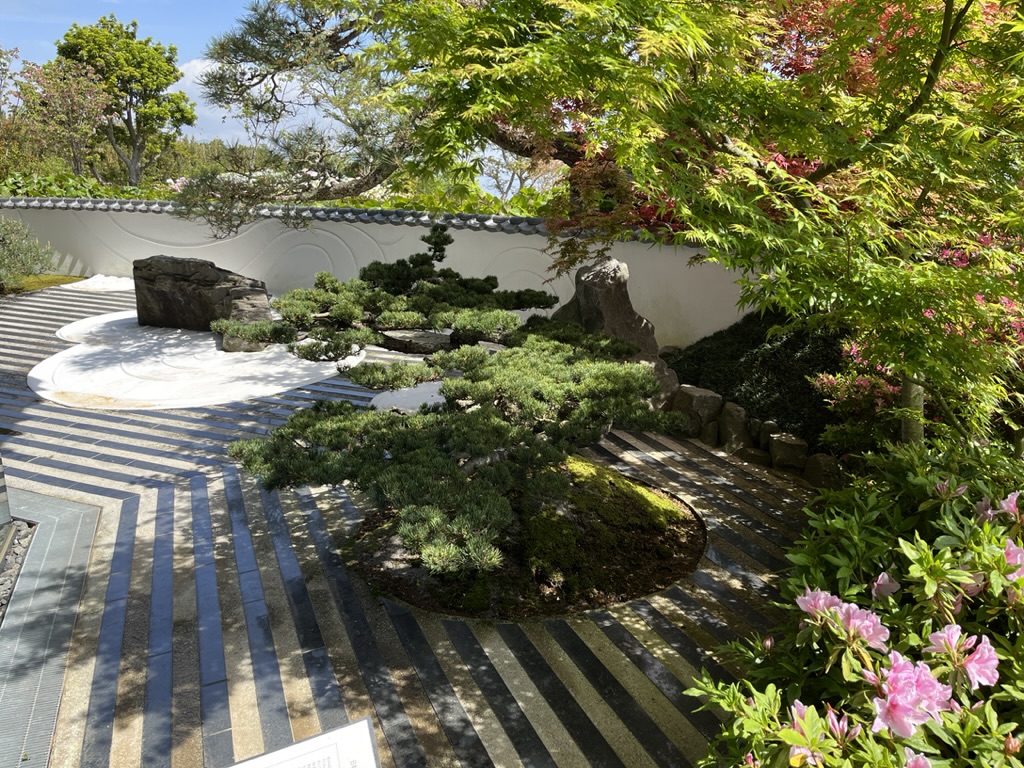
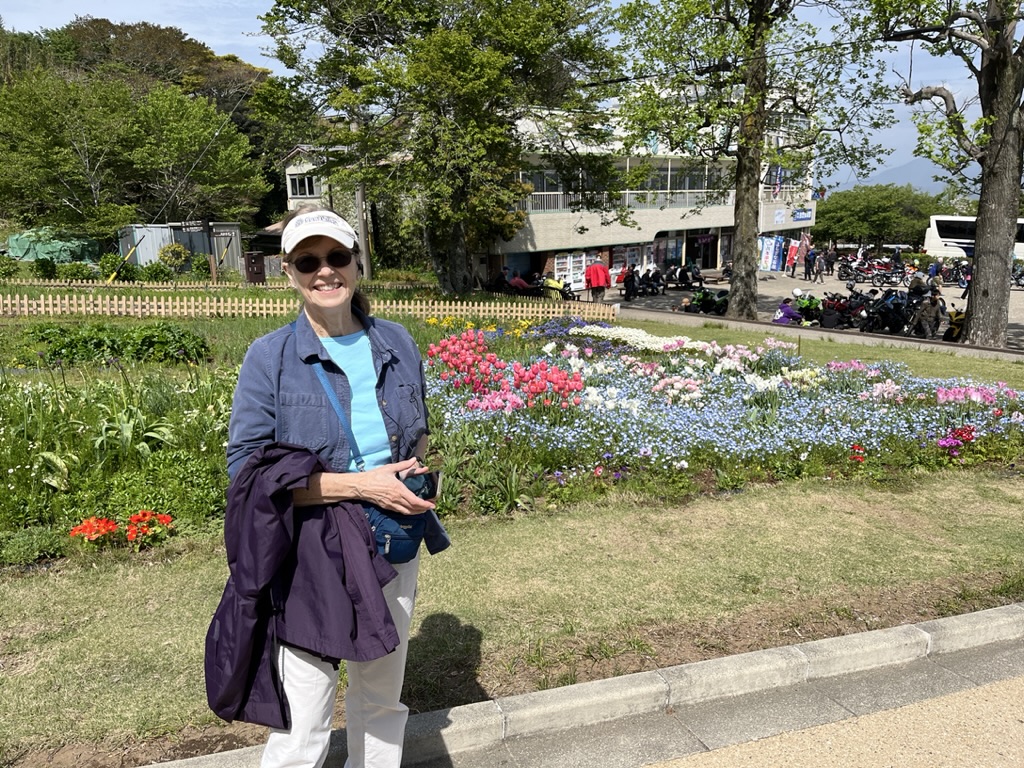
But Fuji was characteristically shy.
Miho no Matsubara Pine Grove and Beach
Our next stop was a famous beach.
We parked a good distance away from the beach and walked down a pine tree lined boardwalk…
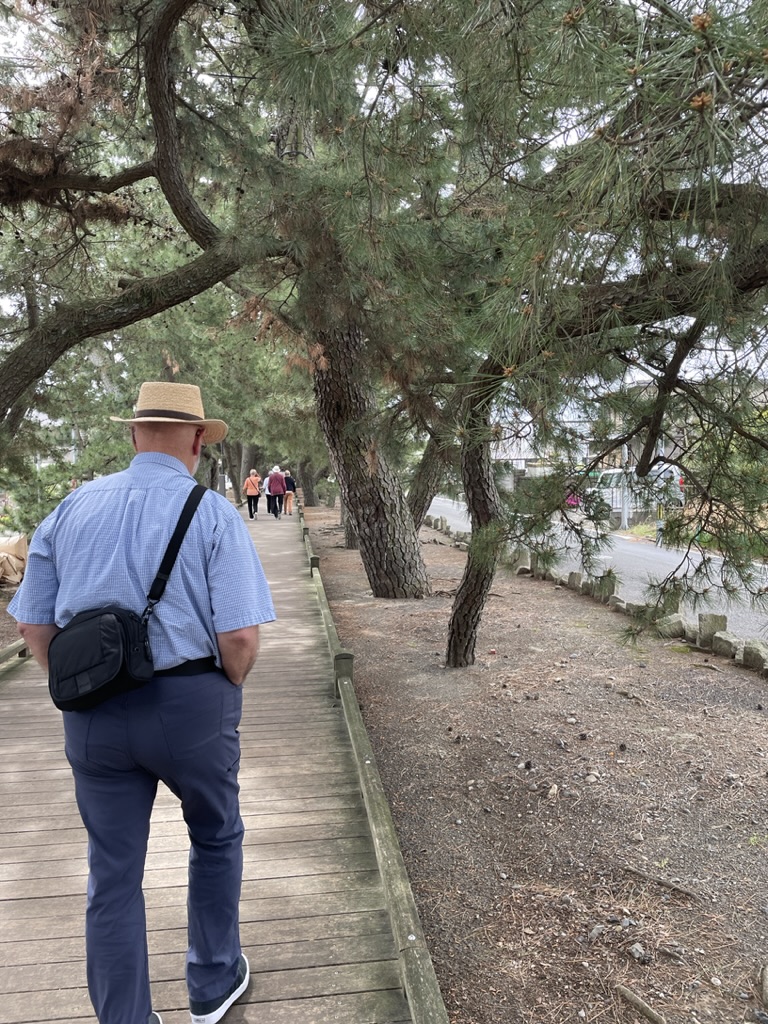
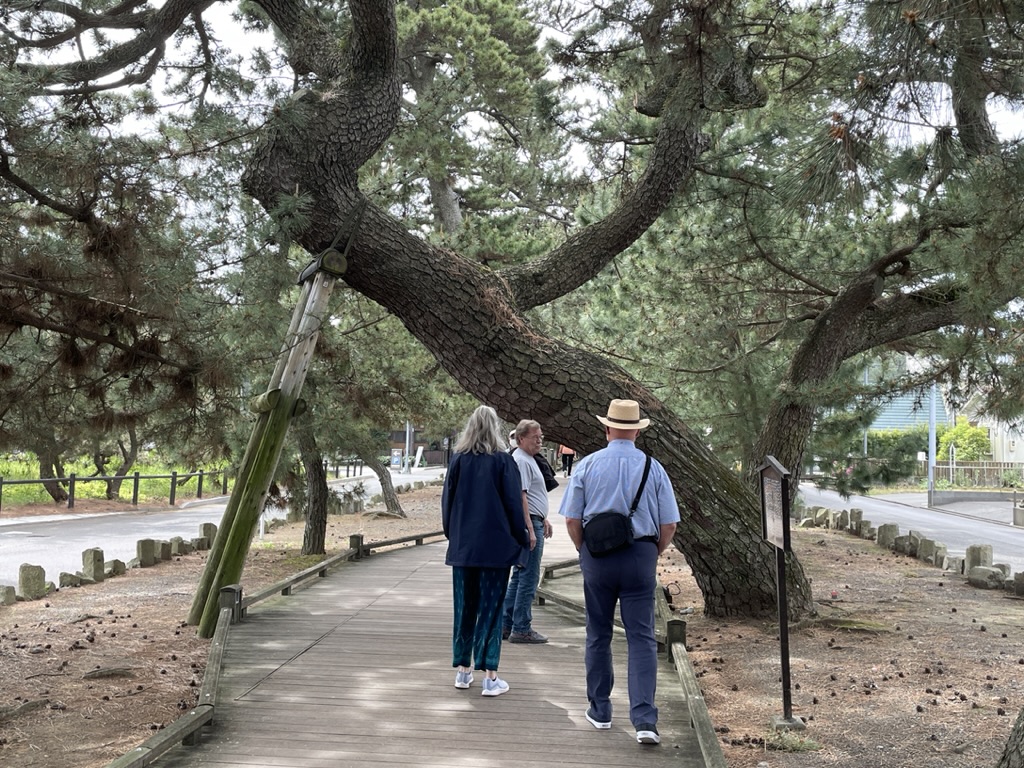
…to get to the commercial center before the beach.
This beach just below Mt. Fuji is famous for a tree and its place in folklore:
While we were there we had some time to check out the beach.
Then it was back to the ship for a very quick turnaround before our afternoon excursion.
We didn’t have time to hit the cafeteria up on 7th level so we stopped by the ‘Living Room Bar’ on 1st and got their ‘Rekke’ (open faced shrimp) sandwiches with their killer chocolate chip cookies for dessert.
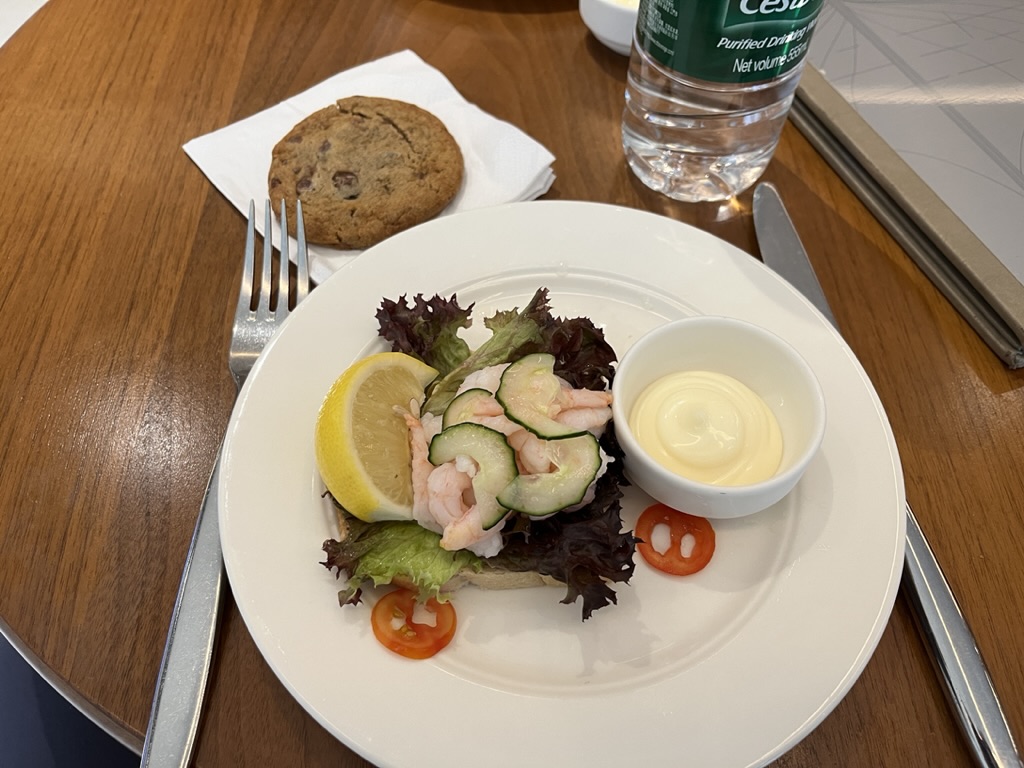
EXCURSION: Shiraito Falls & Fujisan Hongu Sengen Taisha
Then it was back out to the shore to check in for our next adventure.
Shiraito Falls
Our bus headed inland toward the base of Mt. Fuji stopping at an area with a series of waterfalls carrying snowmelt from the mountain. As the snow melts it slowly seeps through the layers of volcanic stones and ash until it hits a soil layer that isn’t as permeable – then forms an underground horizontal aquifer that flows along until it finds an outlet (just like the 1,000 Springs area in Idaho).
Along the way we noted some of the local agriculture.
Fujisan Hongu Sengen Taisha shrine
On the way back we stopped at a Shinto shrine dedicated to the goddess of the mountain.
Just as we were finishing up our tour of the shrine it started to rain, so we hustled back to the bus and back to the ship.
LECTURE: History of Tokyo
Before dinner we took in the lecture on Tokyo history.
Leaving port this evening they feted us with fireworks:
Or maybe they were trying to chase us away. 😉
After dinner we checked out the Port Talk on Tokyo and started packing (sigh).
Last day tomorrow.
See you then, R
Cheryl’s Factoids:
- When Mt. Fuji wears a cloud cap, it will rain the next day. The current Mr. Fuji is actually the third of 3 volcanoes that have erupted over the centuries in the same area with their lava continually building up layers, making the volcano’s cone higher each time.
- Japan has two calendars – the Western one and the Rice calendar which is tied to their farming seasons. School graduations are in March (get the rice planting in before the rainy season starts) and a new school year starts up in April.
- There is a shortage of workers in Japan as the younger generation doesn’t want to work in their fathers fishing boats or on the farm.
- Shrine etiquette: Tori gates mark off the sacred area of shrines and temples. As the Shinto belief has 8,000 gods/goddesses it was easy to also incorporate the Buddhist religion which came from India through China and Korea to Japan back in the 6th century. The Tori gates that are painted vermilion reflect a Buddhist influence while older Shinto gates are plain wood or plain stone. You are supposed to take off your hat and bow before walking through the gate close to either side as the center is reserved for the gods to enter the shrine. The guardian Lions (mouth open swallows evil while mouth shut excludes evil) are from Buddhist traditions also. When you enter a shrine area you should cleanse yourself – walking through the pebble forecourt acts as walking along a river bottom to cleanse your feet. On the left of a shrine there is a water basin and several long-handled wooden scoops. You hold a scoop with your right hand while you pour water over your left hand to cleanse it, then hold the scoop with your left hand to pour water over your right hand, then pour some water into your mouth and spit it out. Finally you pour water down the handle to cleanse it for the next user. Now you can go up the the temple. Note the hemp rope hanging over the doorway with white zig-zag papers handing from it – the rope represents clouds and the papers are lightening flashes. Put your offering coins in the box then bow 2 times, clap 2 times (to get the god’s attention), pray, then offer a final bow. Wish papers are filled out and tied to the trees or boards close to the temple – flowers or barrels of sake (if your wish was for a good rice harvest) are left as thanks to the gods for granting your wish.
- The temples, shrines, and tea houses often have traditional roofs which are made up of a very thick layer of white cypress branches. The roofs and temple structures are refurbished often to keep the knowledge of this construction technique current in each new generation. Japan is said to have more shrines than convenience stores.
- The Shinto shrines have Kami (spirit) guardians – the Kitsune (foxes). They protect the rice fields (statues are often shown with a mouse in their mouth) and are said to be messengers to Irani, the Rice god. In folklore, the Kitsune are trickster shape shifters with supernatural powers. Once a kitsune has acquired its ninth tail, its fur turns white or gold, and gains immeasurable powers.
- After the terrible Kanto Earthquake in 1923, the US sent food and aid to Japan. It felt Japan, although not its colony, was a friendly trading partner. When Japan bombed Pearl Harbor in 1942 the US felt, not only attacked, but that its friend had betrayed them. With over 400 bombs dropped on Tokyo Mar 9-10, 1945, Tokyo was devastated and felt betrayed. We each only remember the hurt done to us.
- As the ship blew its warning horn and we sailed off in the evening dusk, Shimizu shot off a beautiful fireworks display to say good-bye!
